Search results
83 results found.
83 results found.
A few days ago, this extraordinary assemblage appeared on via Garibaldi. The sign explained it: “No to violence to women.” I didn’t know that in the year 2000 the United Nations had declared November 25 to be the International Day for the Elimination of Violence against Women, arguably the most pervasive human rights violation on earth.
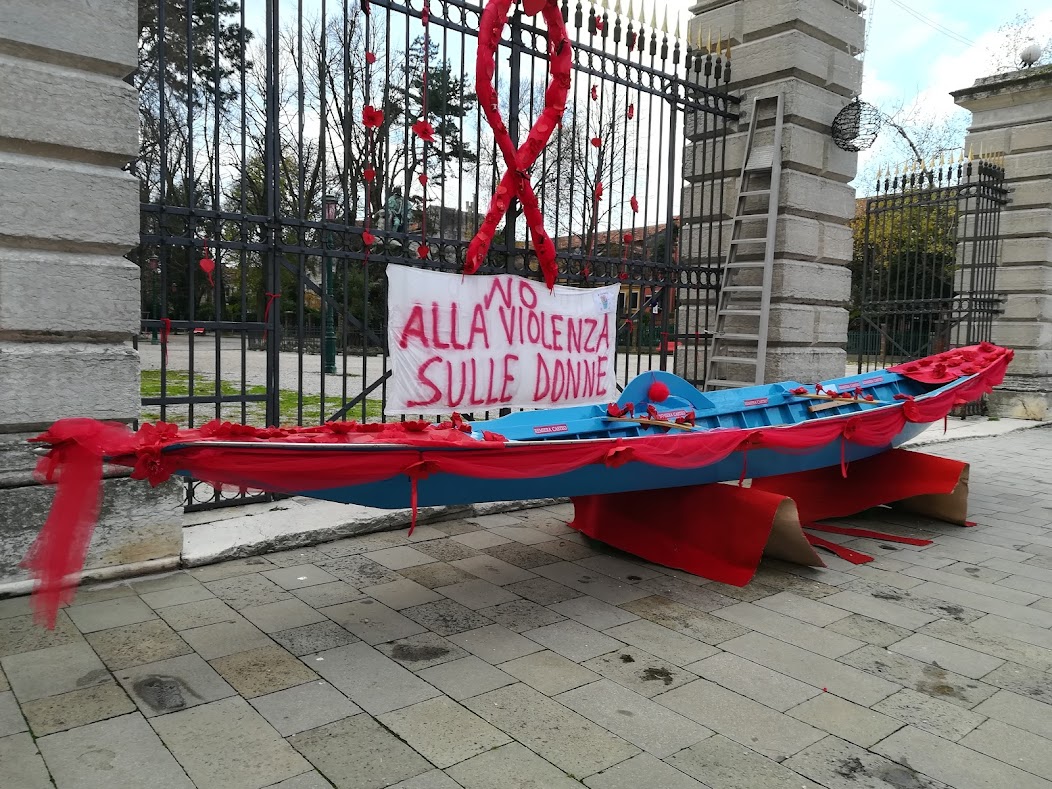

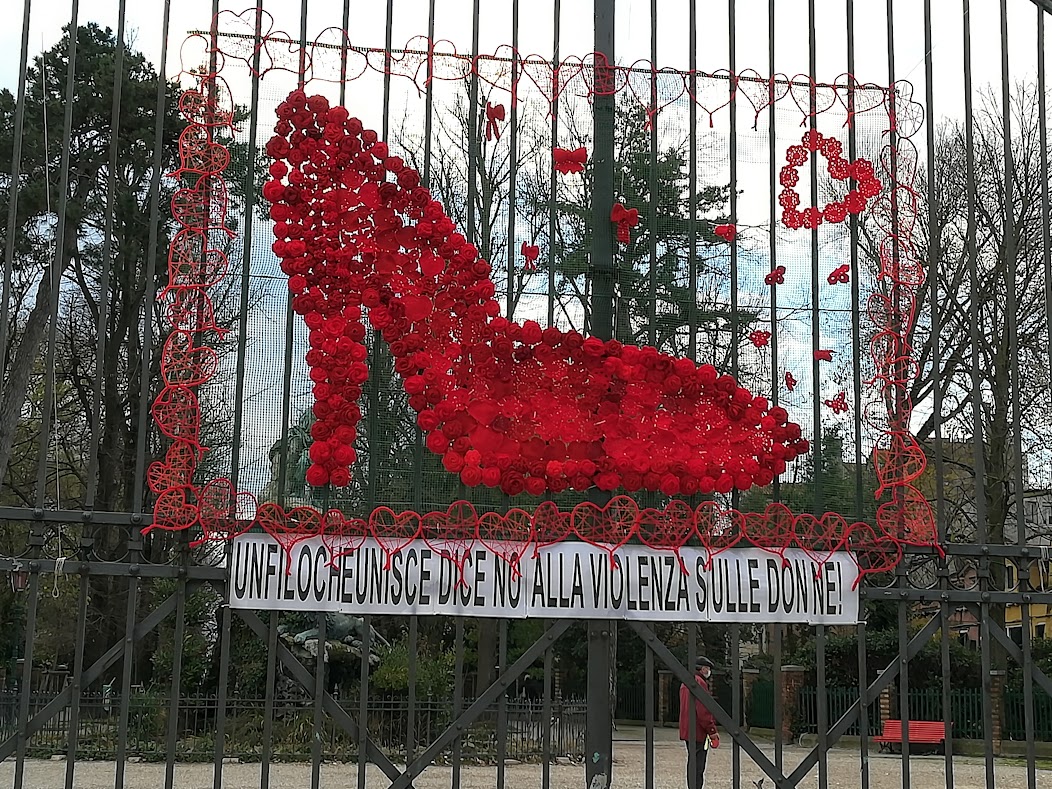

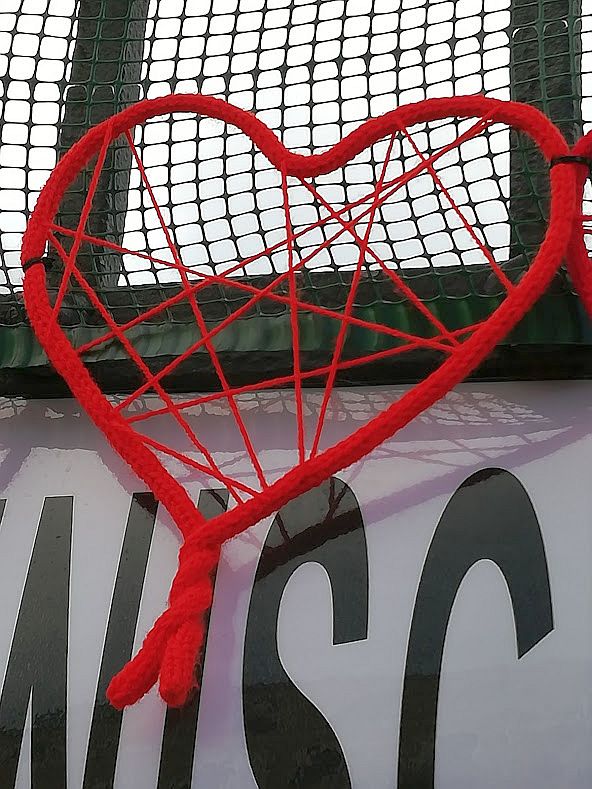
Let me say, before the comments begin to come in, that I am aware that men also suffer from domestic and other forms of violence. I know this. But I don’t want to start some ghastly competition between who is more tormented. Verbal, emotional, physical abuse damages everyone — victim, perpetrator, children who have to witness it. Fun fact: One in three women in the world suffers from some form of violence. November 25 is at least one day in which to acknowledge the violence inflicted on them: grown women, little girls, old ladies, at the hands of men, but also of other women, of their own children, and even whole families who agree to whatever atrocity they consider appropriate.
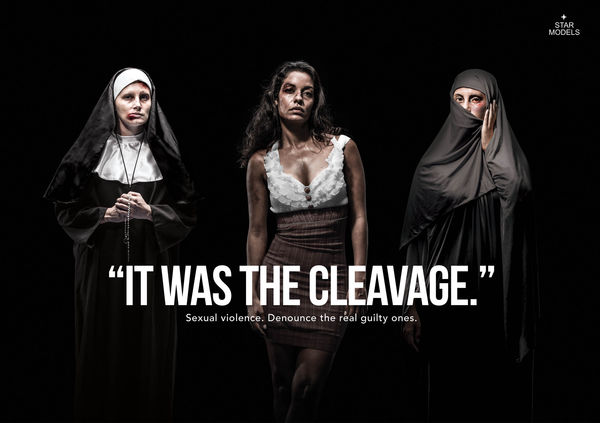
And then there’s this: Just a few weeks ago, 50 year-old Cosimo Damiano Bologna was having a coffee with a lady friend at a cafe’ in the little town of Canosa di Puglia. She had been stalked for an undisclosed amount of time by a man who suddenly appeared, and began to insult and otherwise assault her verbally. Cosimo intervened in her defense, the aggressor aggressed, and literally beat him to death. Not immediately; it took Cosimo two weeks to die.
So not only is there bride burning, dowry death, honor killing, widow cleansing, acid attack, and let’s not forget breast ironing, to name a few dreadful things at random, now we have women getting hurt by men, and men getting hurt for defending women from men.
I am not saying every woman is perfect. I’m just saying that if you wouldn’t do it to a dog, don’t do it to a woman. And if you would do it to a dog, still don’t do it to a woman. Let’s make this the International Century for the Elimination of Violence against Women. It’s really going to be better for everybody.

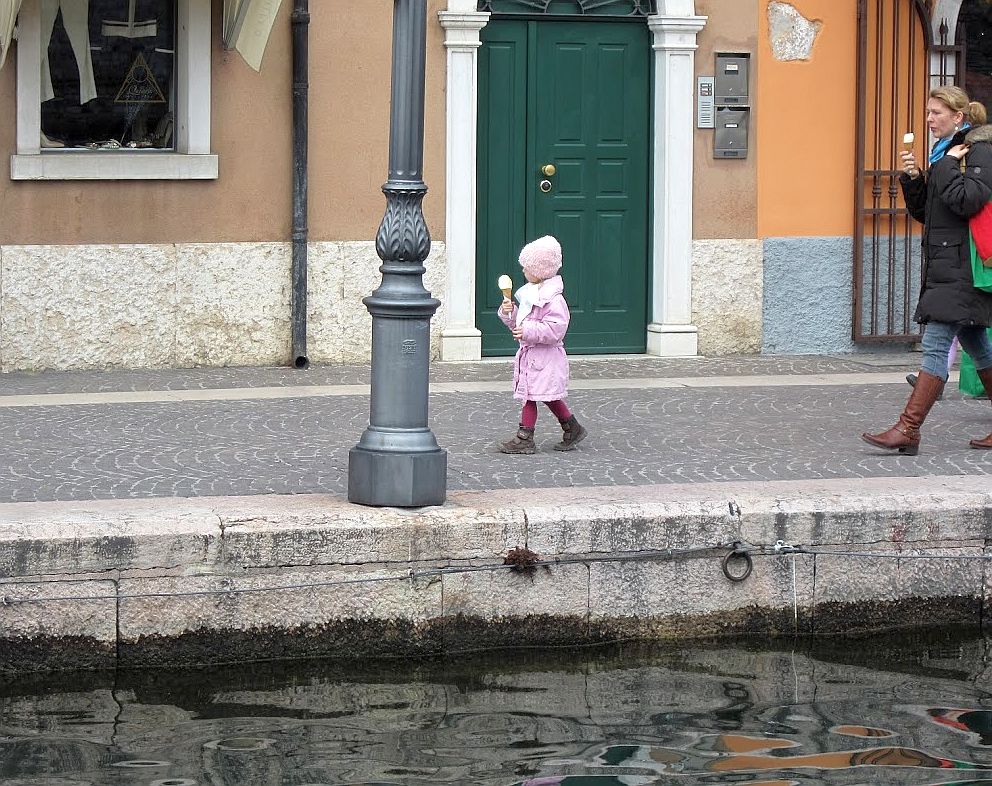
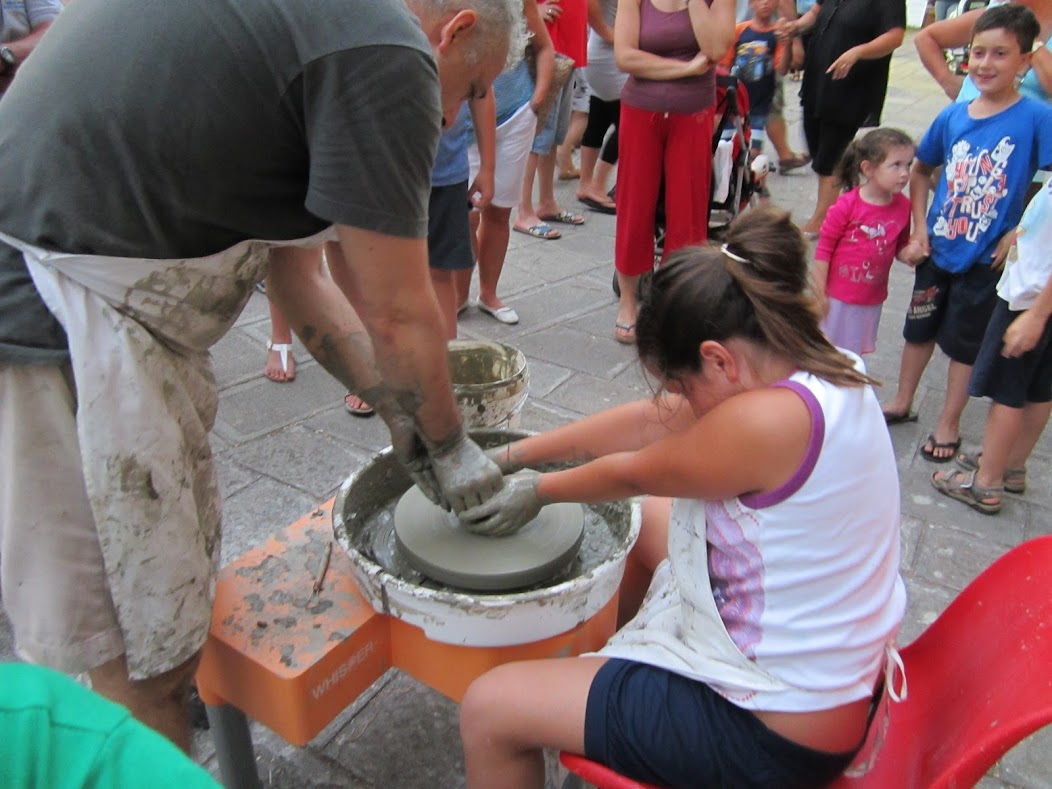

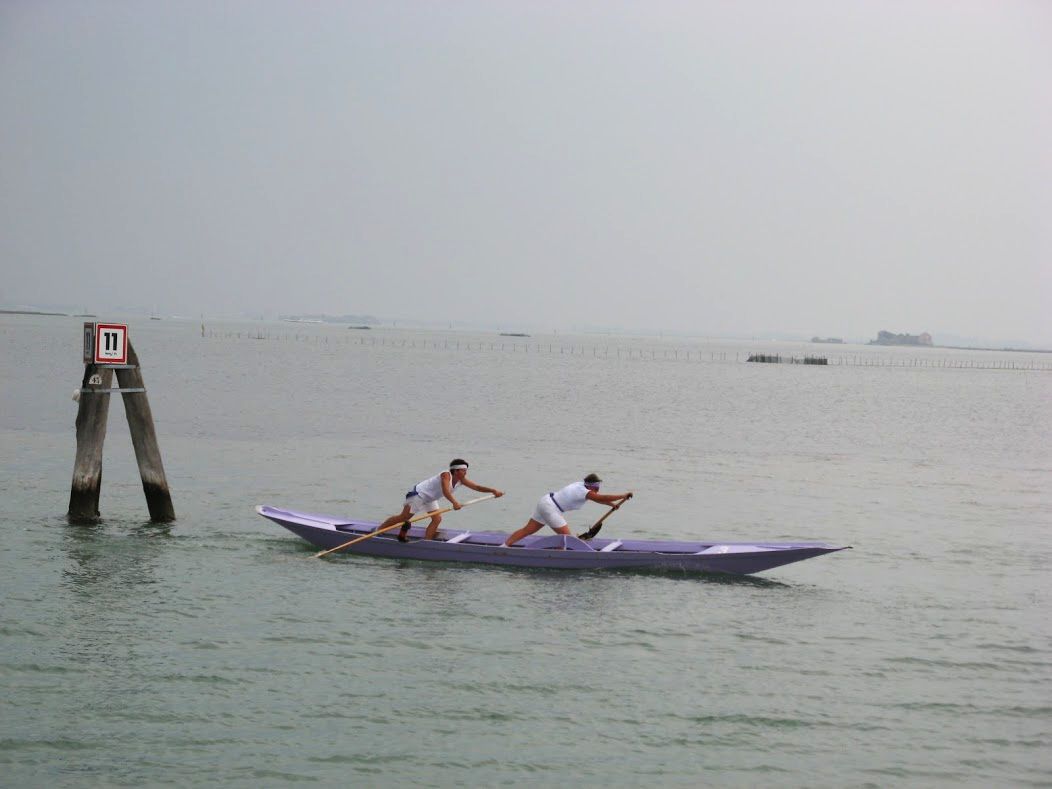
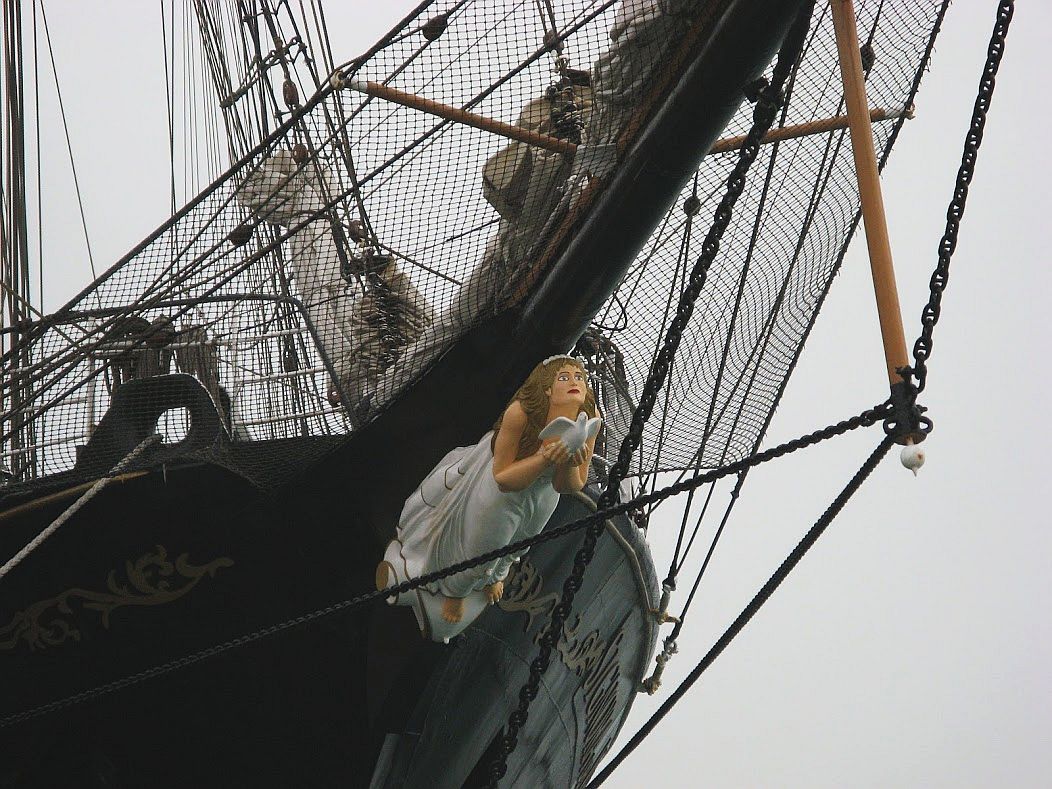
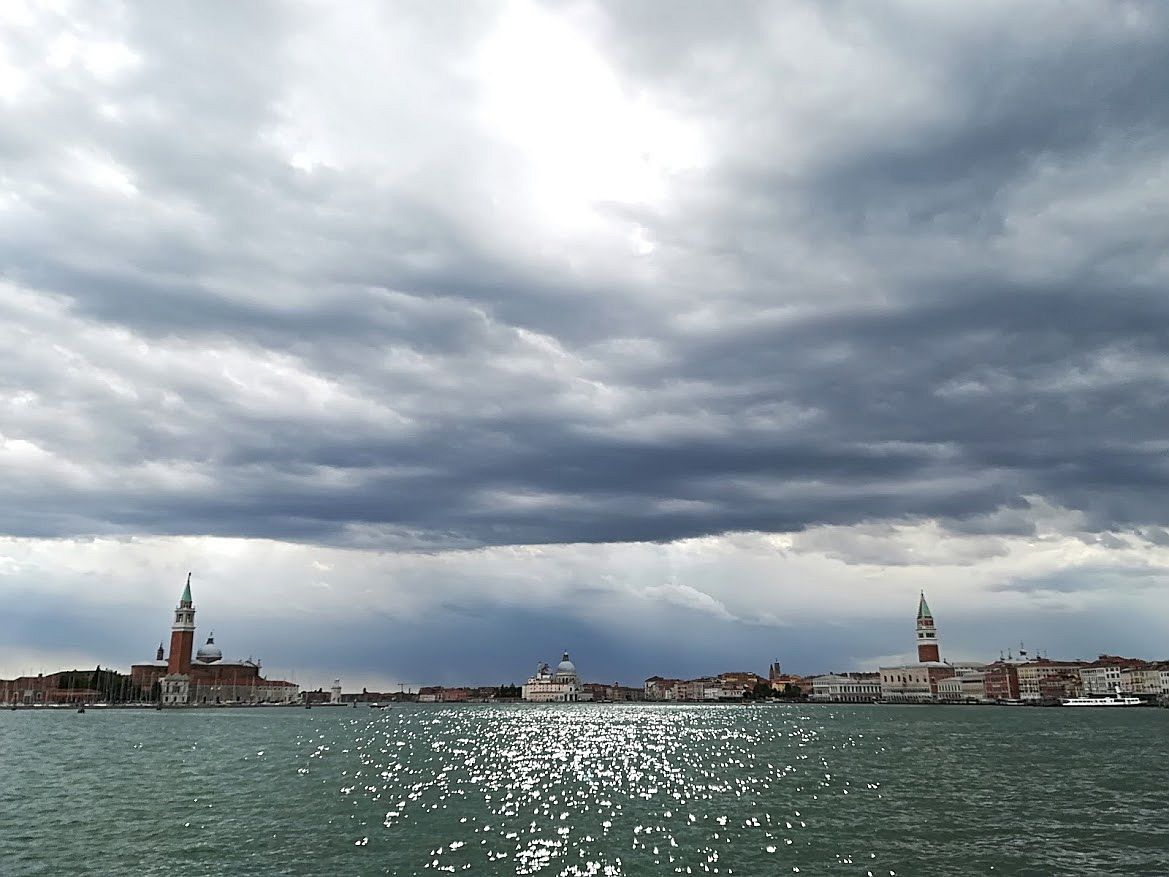
Now that the G20 has come and gone, the surface of life that was so agitated thereby has returned to its normal level of agitation. There are plenty of things to keep track of, to one degree or another. In some cases, to many degrees.
Here are a few of them:
REDENTORE: The annual feast of the Most Holy Redeemer is tonight and Sunday — the big waterborne festivities on Saturday, the races and big religious celebration on Sunday. Last year there were no fireworks, which left a huge hole in the festivities. This year there will be fireworks, but in a serious effort to prevent the hazardous clumping-together of crowds the city has imposed a limit of 18,000 people, total, and those persons have to have made a reservation. To reach the place or area they’ve booked, they have to show their printed ticket as well as their “Green Pass,” or other certificate of vaccination, OR a document that confirms that their swab was negative within the 48 preceding hours.

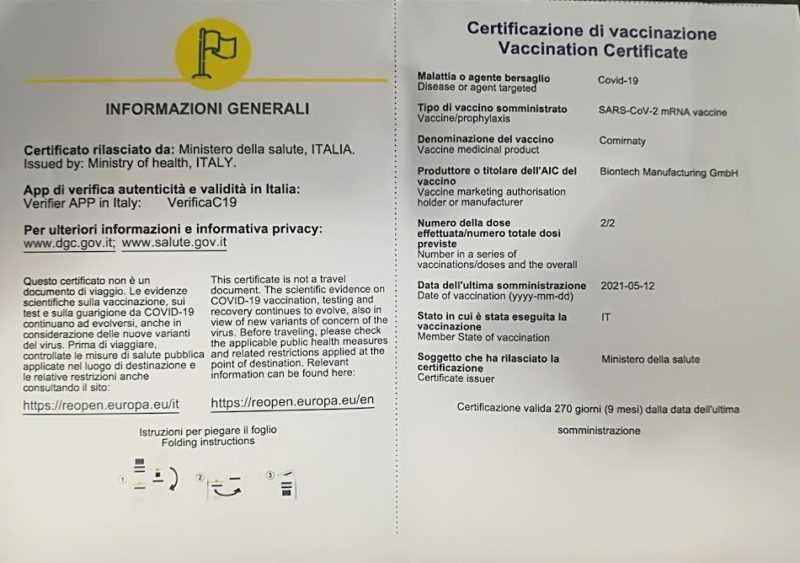
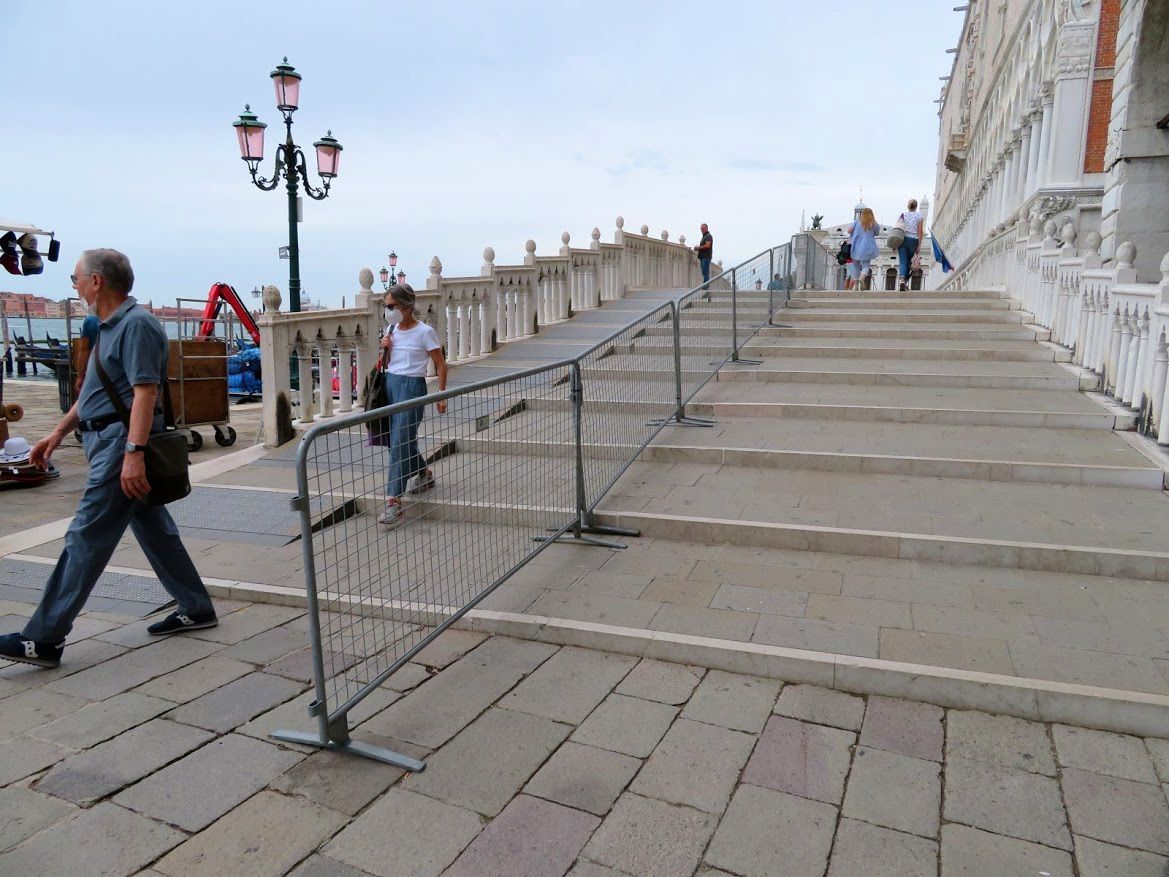
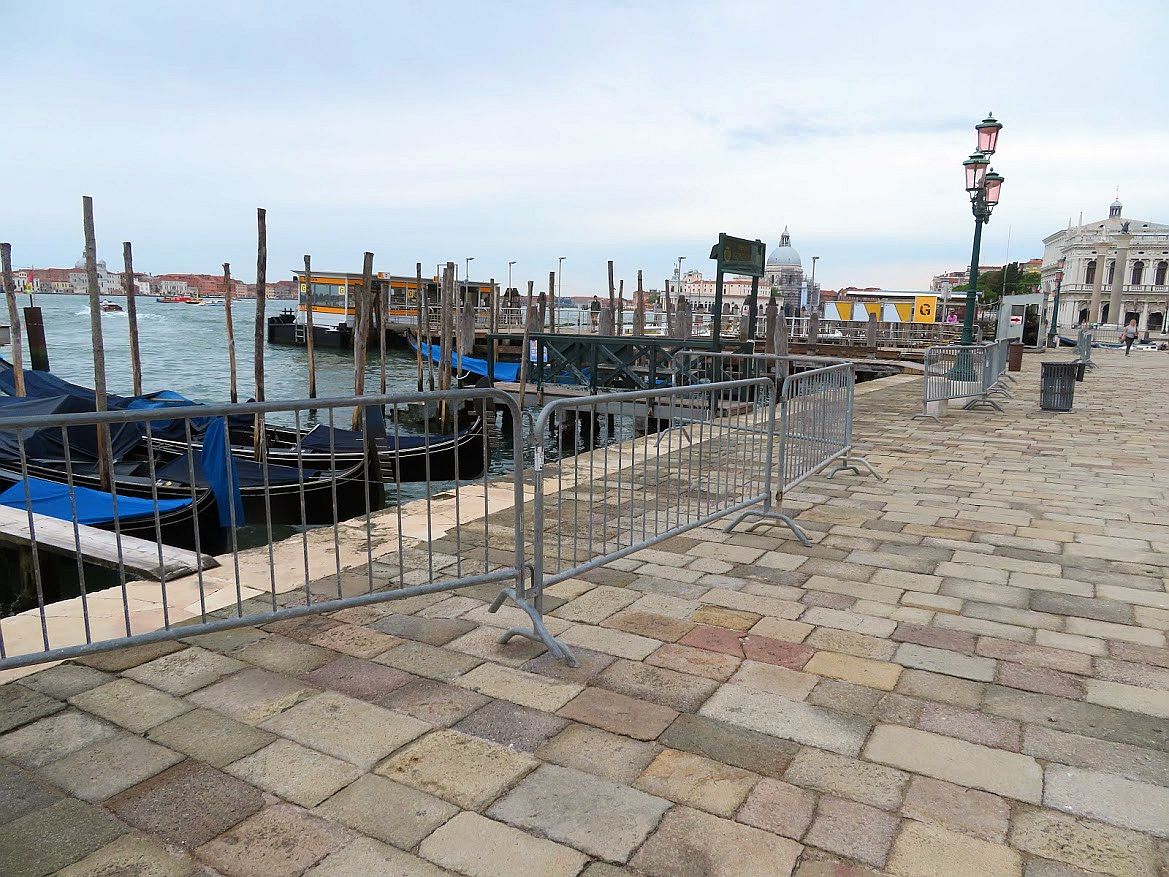
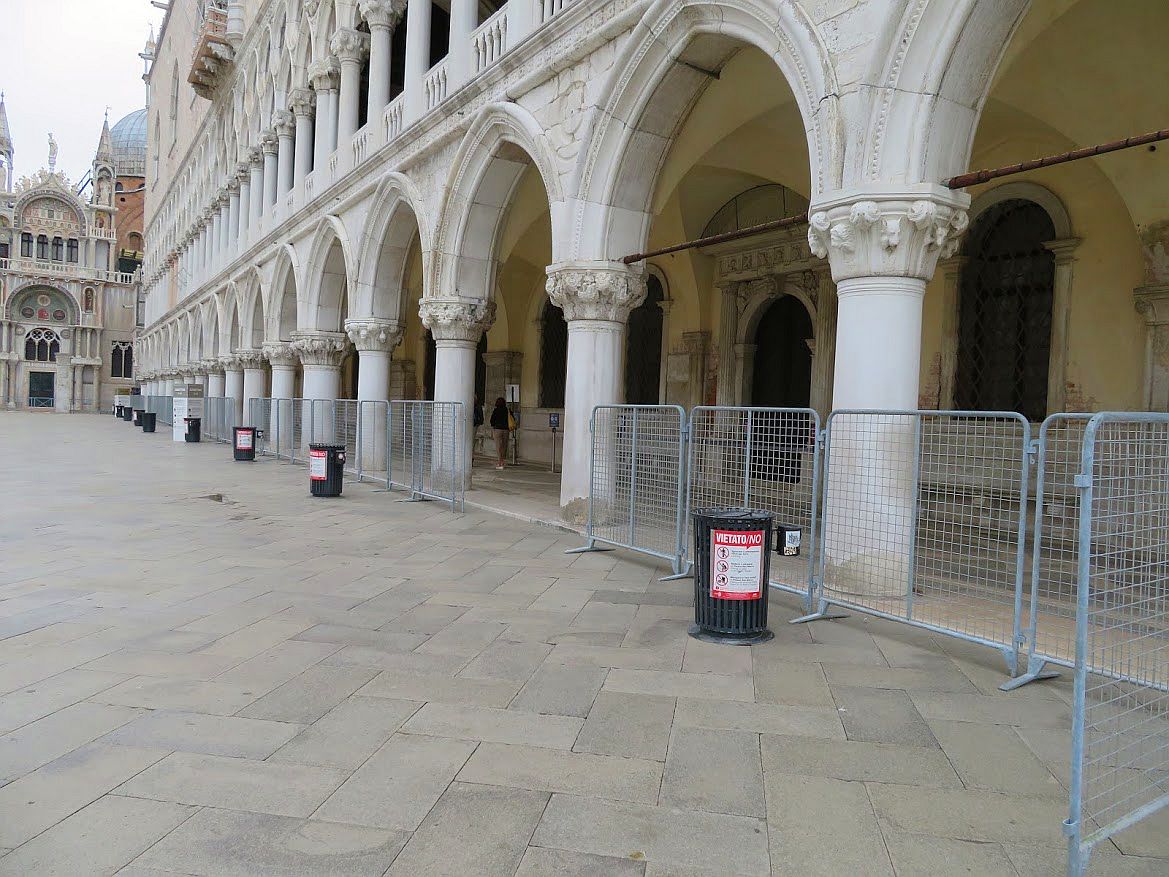
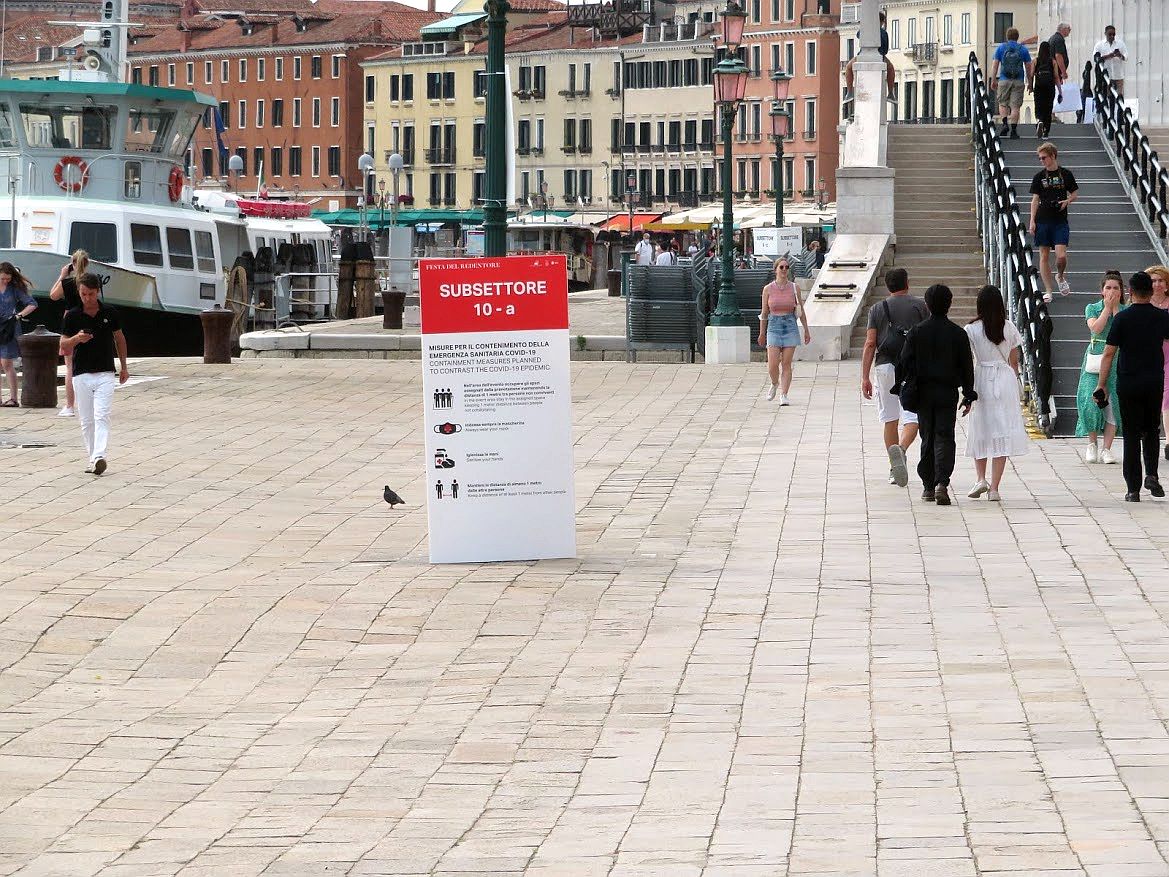
Boats obviously won’t be permitted to tie up to each other: social distancing afloat. No trying to pass from boat to boat. No dancing parties aboard (take that, you big floating discotheques). The watery areas are delimited according to size and the use of boat, and you have to show a printed “ticket” from your booking (on water as on land) to be permitted to enter the area. Once your boat has entered its appointed area, it is forbidden to exit, nor will it be permitted to put people ashore. Boat captains have to keep a complete list of passengers for 14 days. Also, wear your mask.
There are regulations for people booking space along the fondamentas to watch the fireworks, or to scarf their dinner, but I’m not going to go into all that. If you’ve booked a space, you already have the rules. If you haven’t booked, you’d better hop to. Preference is being given to Venetians, it says here.
Lino and I will not be there; it’s been years since we decided we couldn’t stand the mayhem of the motorboats in the dark, with their drunk drivers. We might walk up to the fondamenta dei Sette Martiri (where I didn’t see any signs of assigned places) if it’s not too crazy.
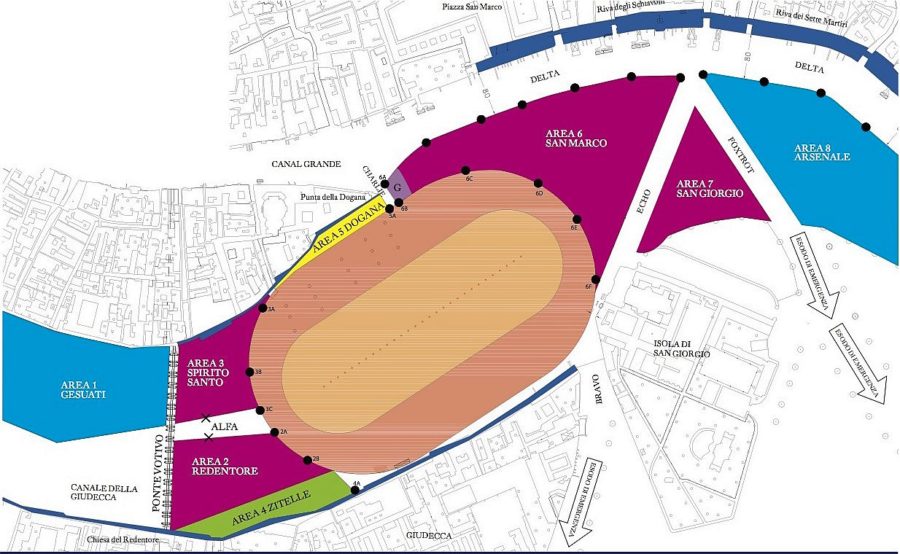
THE BIG SHIPS: Ship-haters rejoice: As of August 1, the biggest ships will no longer be permitted to pass through the city. These ships are defined as having at least one of the following characteristics: Gross tonnage above 25,000 tons; hull at the waterline longer than 180 meters; height of ship more than 35 meters, excluding ships that are motor- and sail-driven; use of fuel in maneuvering that has a percentage of sulfur equal or superior to 0.1 per cent. Like any other cargo vessel, the big cruise ships will be routed from Malamocco to Porto Marghera, one of many solutions that have been discussed since dinosaurs roamed the earth. But this is just a stopgap. The real solution is the offshore port, and that’s not happening tomorrow.
Seeing that neither Porto Marghera nor anywhere else will be ready this year, the MSC Orchestra or Magnifica and Costa Deliziosa (the only big ships on the dance card this summer) will be departing, respectively, from Monfalcone and Trieste, up along the northern Adriatic coast. Passengers arriving in Venice will be swabbed or otherwise health-checked at the Venice Maritime area, then loaded on buses and driven a few hours to their ships. So much for the thrill of cruising from Venice.
The offshore port project is going to take some time. Phase One, send in your proposals by December 31, 2021. Make sure your design can accommodate modern container ships as well as the biggest cruise ships, and make sure the port will be safe in stormy seas because there won’t be any lagoon to protect you anymore. Phase Two, five experts evaluate the proposals. Phase Three, choose the winner. That decision will be made by June 30, 2023, if all goes as planned. That’s a pretty big “if,” I feel compelled to add.
Seeing that creating the offshore port will take at least five to six years, Porto Marghera will have to be modified fairly quickly. Building the new passenger terminal there, deepening the channels and revising the current industrial docks will cost 157 million euros — a hefty sum for a temporary set-up. Then again, “temporary” has a flexible meaning here. The Accademia Bridge was built in 37 days in 1933 as a temporary structure while proposals for the real bridge were to be evaluated, and it’s still there.
I have the impression that the sudden decision on dealing with the big ships is linked somehow to the fact that UNESCO recently decided to designate the water entrance to Venice — Bacino of San Marco, Canale of San Marco and the Giudecca Canal a national monument. This is surprising in that UNESCO, when it listed Venice as a World Heritage Site in 1987, specifically included the lagoon. You wouldn’t know that by the savaging of the environment that has gone on since then, but anyway, I’d have considered the Bacino, etc. as part of the lagoon. Now it’s a national monument. Okay then.
Spare a thought, though, for the humans — 1,260 direct workers and 4,000 indirect workers — involved in what will be a radical restructuring of the whole shipping enterprise here. Many are fearing for their jobs.
Almost no workers believed that this decree would come so fast, and right in the middle of the season. The maritime agencies are also worried. Every shipping company is required by law to engage a maritime agency, but, says Michele Gallo, head of two agencies, “You can’t even think of having the same ships as before coming to the docks at Porto Marghera, using the same places as the commercial ships. This is a devastating decree.” Organizing the entry, passage and departure of so many ships through the inlet at Malamocco and along the Petroleum Canal (Canale dei Petroli) is going to be a job worthy of an air traffic controller.
The 46-year-old Venetian businessman, well-known and loved by many, has been in prison in Sudan for three months. He is the owner of a company that produces electric transformers that has been doing business in Sudan for years. He has been accused by a Sudanese company of fraud, but the situation is an utter tangle of claims and characters. However, the photograph of the cell in which he was kept for two months with 30 other men, at temperatures of 114 degrees F., was all too comprehensible. Yes, the Italian government has attempted to intervene; yes, money has been paid, but turns out someone wants still more.
Now he is on house arrest in a Sudanese hotel, awaiting the next hearing (August 9) in the string of court appearances that may finally resolve the problem. He has already been absolved of two accusations, but it’s hard to know who wants what at this point. Of course money is at the core of this. Marco is well-known in the Venetian world of sport — Venetian rowing, for one thing, as well as rugby. As it happens, Lino has known him since he (Marco) was a boy. Also, Lino taught his mother how to row.
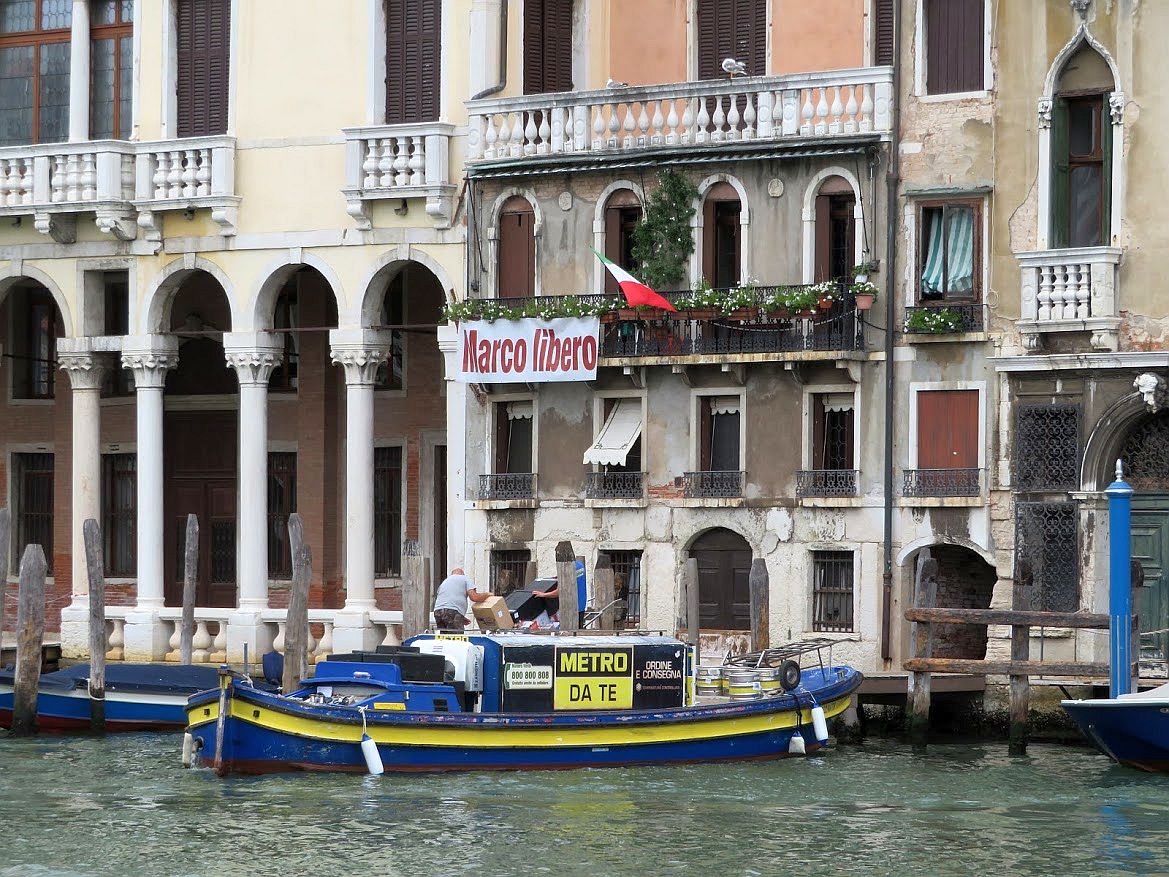
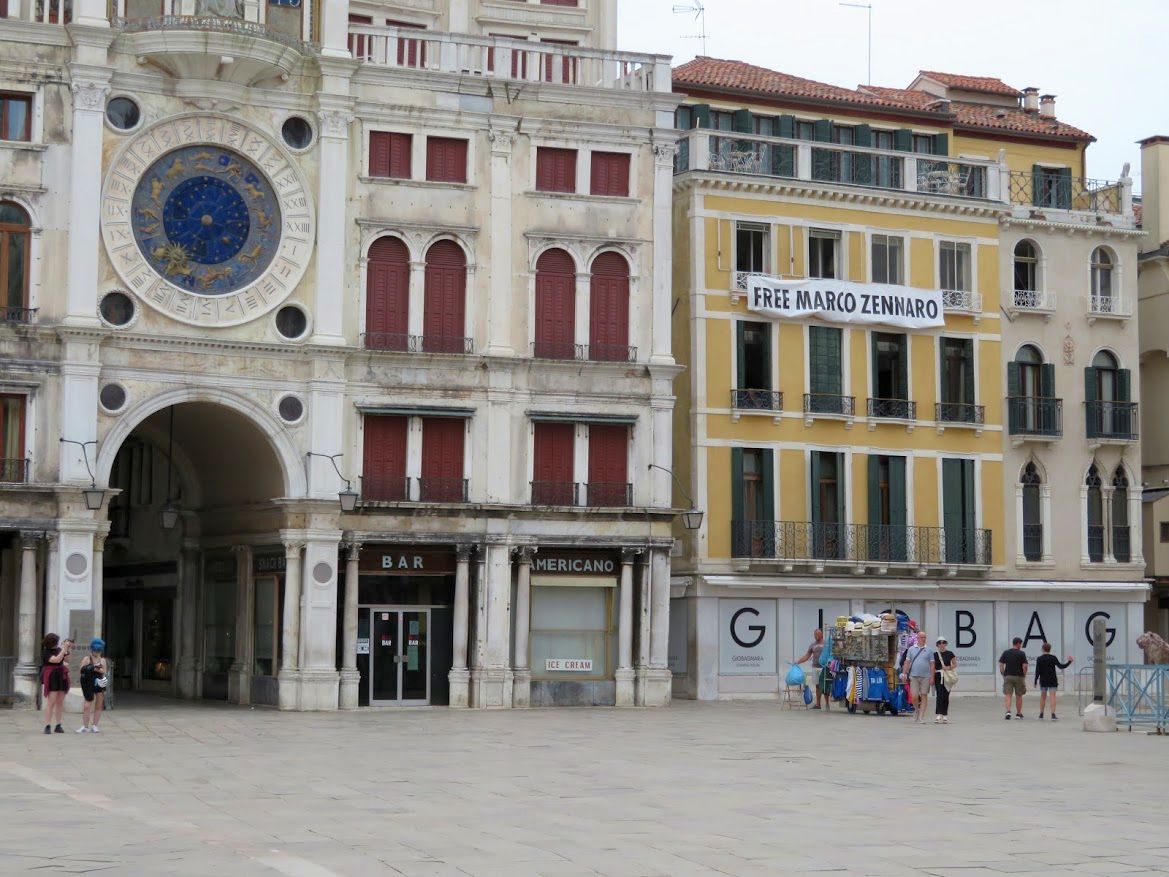
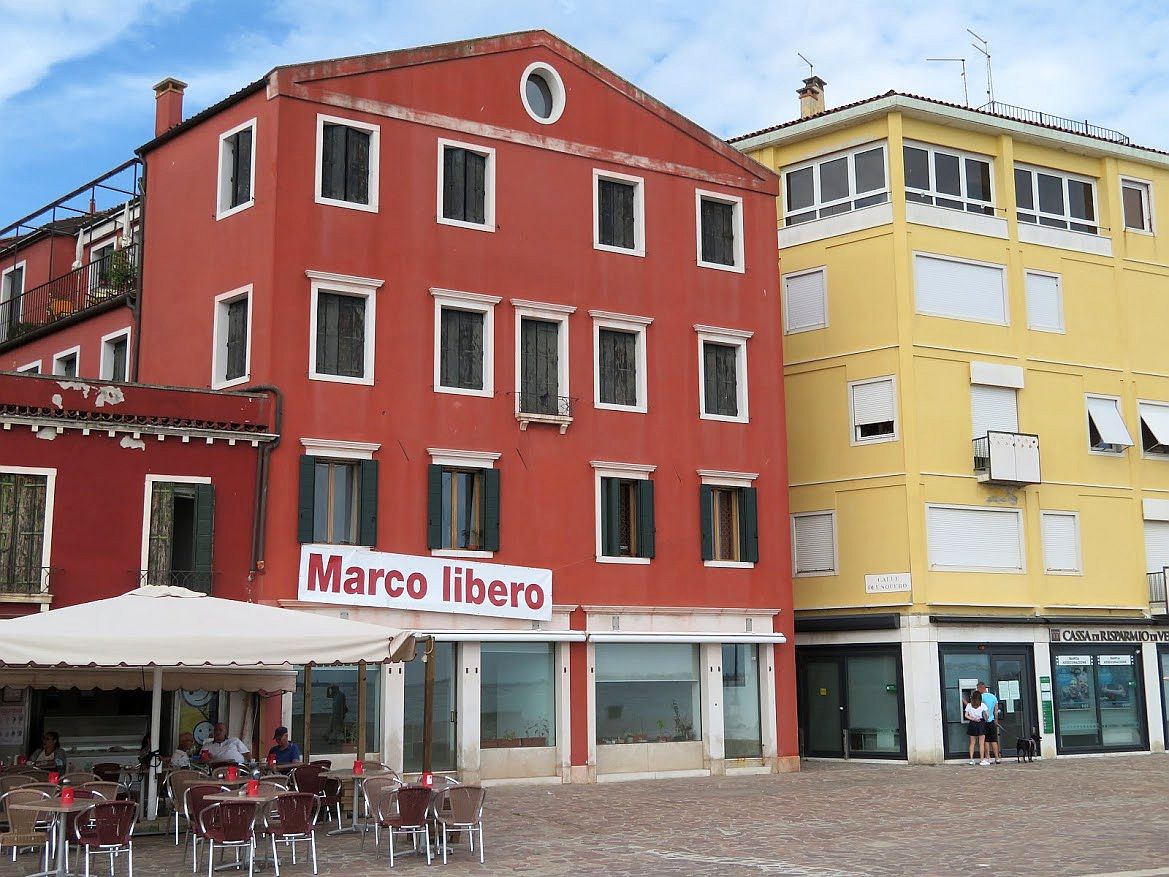
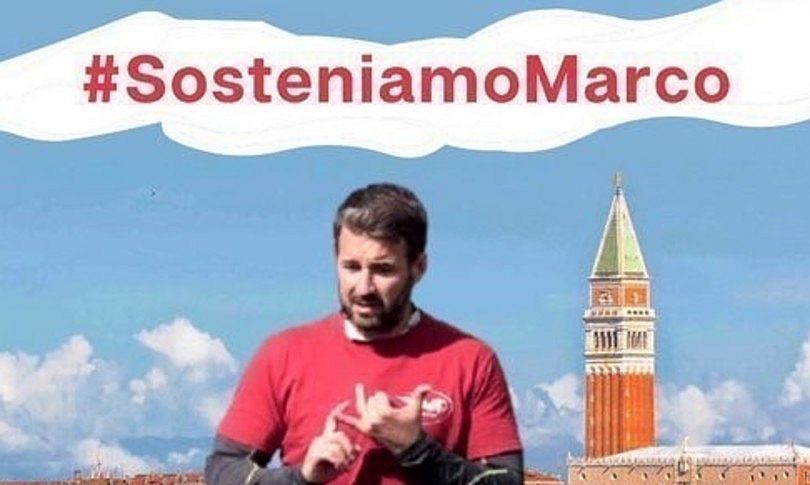

MOSE:
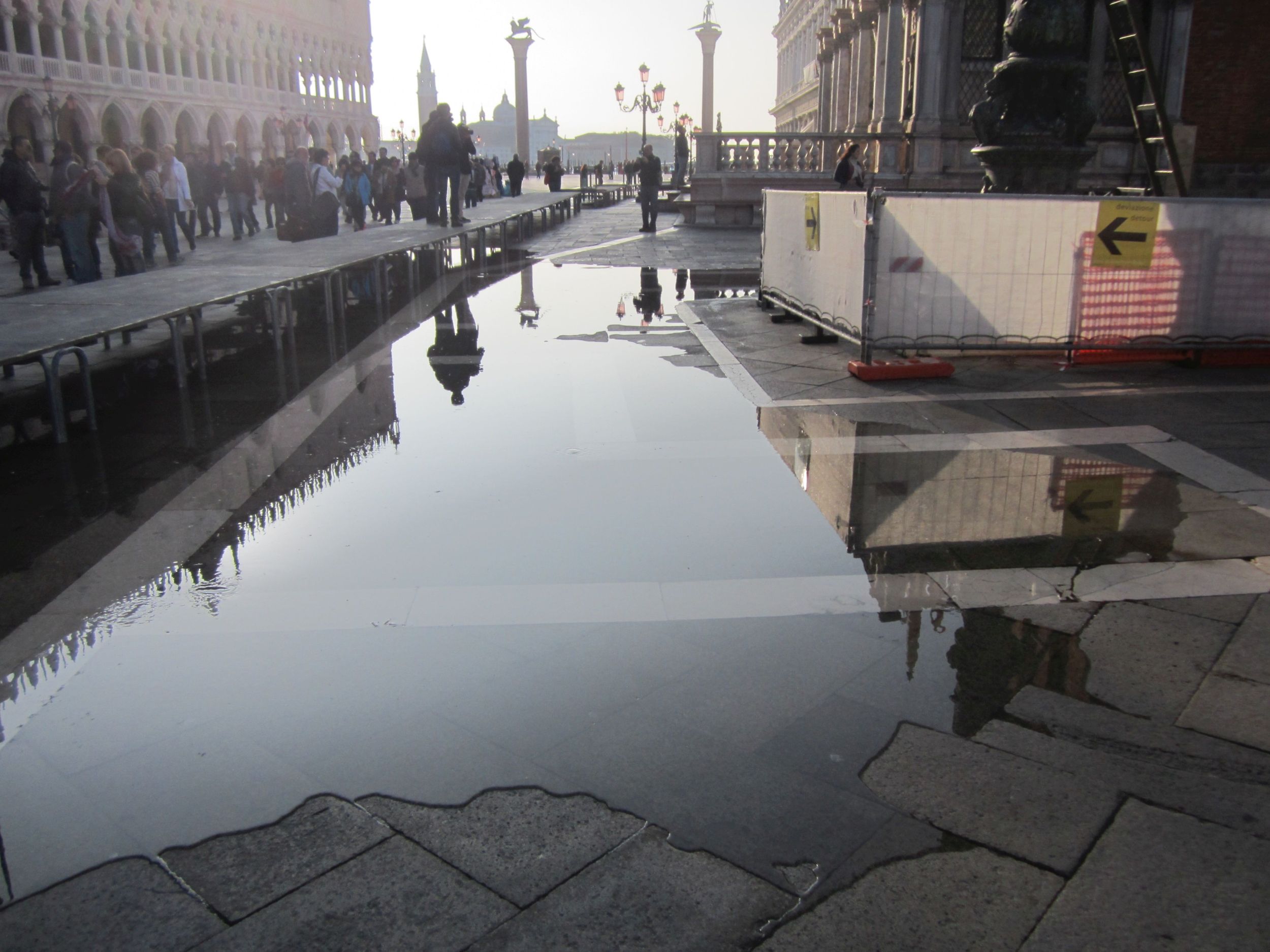
Mose worked last winter (except for one time), so you might think all is well? You would think wrong. I’m starting to dread the winter again.
The plan was to complete all the work by June 30, and declare the project finished on December 31, 2021. But that timetable is now in tatters for various reasons, primarily money problems (as always). The refusal of some suppliers to continue without payment also slowed things down, and the work was officially suspended yesterday, July 16, even though it actually had been stopped for three months already.
Without regular tests, without personnel from the companies involved, without some degree of ongoing maintenance, it’s not certain the gates will even rise when needed. Broken elements haven’t been replaced, parts are deteriorating because there is still no air conditioning in the underground gallery. There is severe corrosion that has been reported for years, to the frames of the underwater tensioners as well as the hinges of the gates. Encrustation of barnacles and other crud will certainly make the gates heavier. The gates at San Nicolo’ have been underwater for eight years now.
Bids have been solicited for a maintenance program budgeted at 64 million euros, even though some estimates maintain that at least 100 million euros will be needed for this every year. (Personal note: Lino has never batted an eye at the titanic construction costs. His refrain has always been simply “And the cost of the maintenance?”)
A Venetian deputy in Parliament, Orietta Vanin, has written to Enrico Giovannini, the Minister of Public Works, saying “A plan is missing for the launch of the work and the completion of the machinery. When is Mose going to be tested? What is the risk to the city in view of autumn? At what point are the interventions for the security of the Piazza San Marco? We’ve asked several times but have never had a response.”
TOURISM:
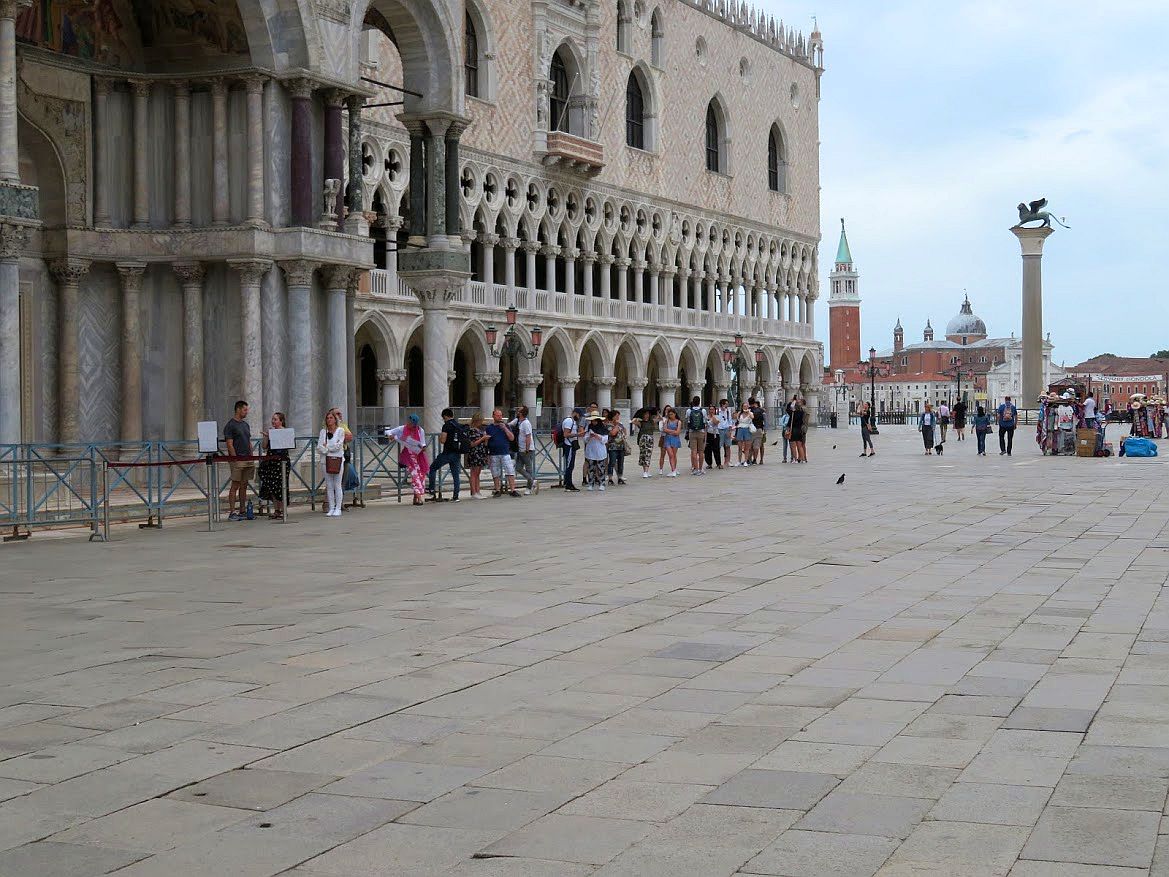
The infamous hordes are not yet swarming the streets; tourists there are, many of them still day-trippers, but not insupportable numbers, by any means. We could probably use a good horde or two right now. Happily for everyone, American travelers are finally permitted to fly to Venice (I presume also to the rest of Italy). Delta Airlines has non-stop flights from Atlanta and New York, and the other day 200 passengers from the USA disembarked to great, if silent, applause. That’s just a drop, however, as the Venice airport is currently handling 15,000 “passages” a day, a mere third of their daily pre-pandemic total.
Still, no coherent plans for managing the eventual masses have yet been proposed. The secretary of the artisans’ association, Gianni De Cecchi, says “The pandemic has passed in vain.” So stand by for the usual complaints, protests, and laments to come forth again. Probably toward the end of next summer, if forecasts can be trusted. Stay tuned.
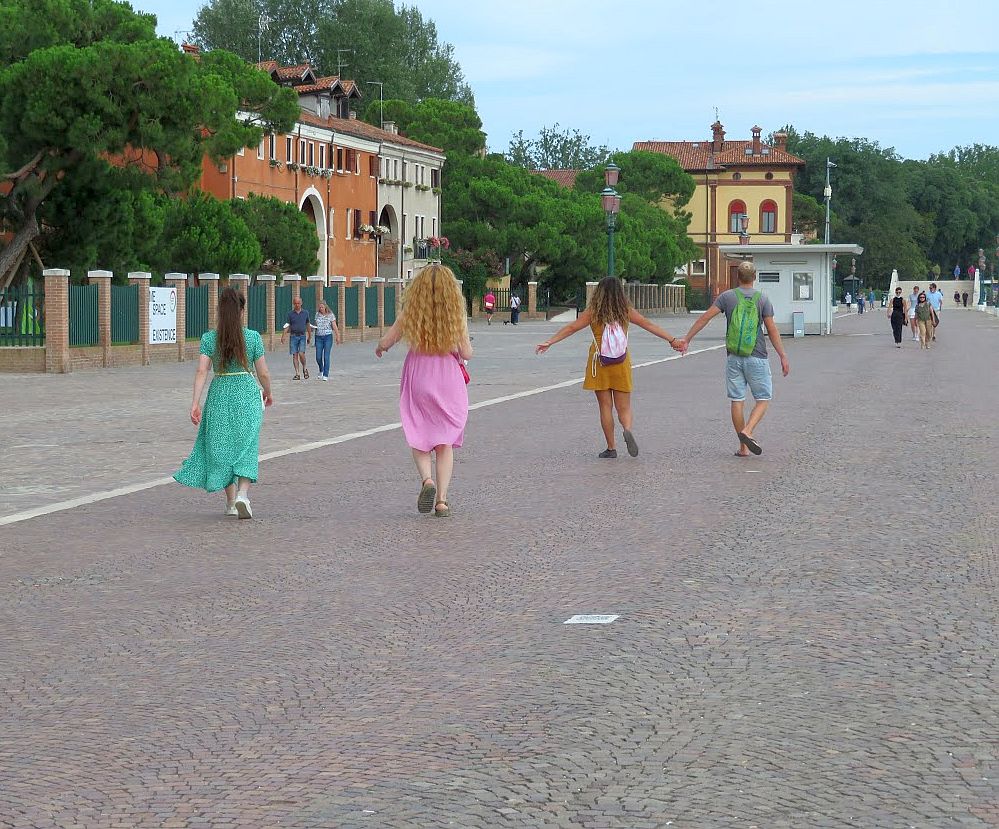

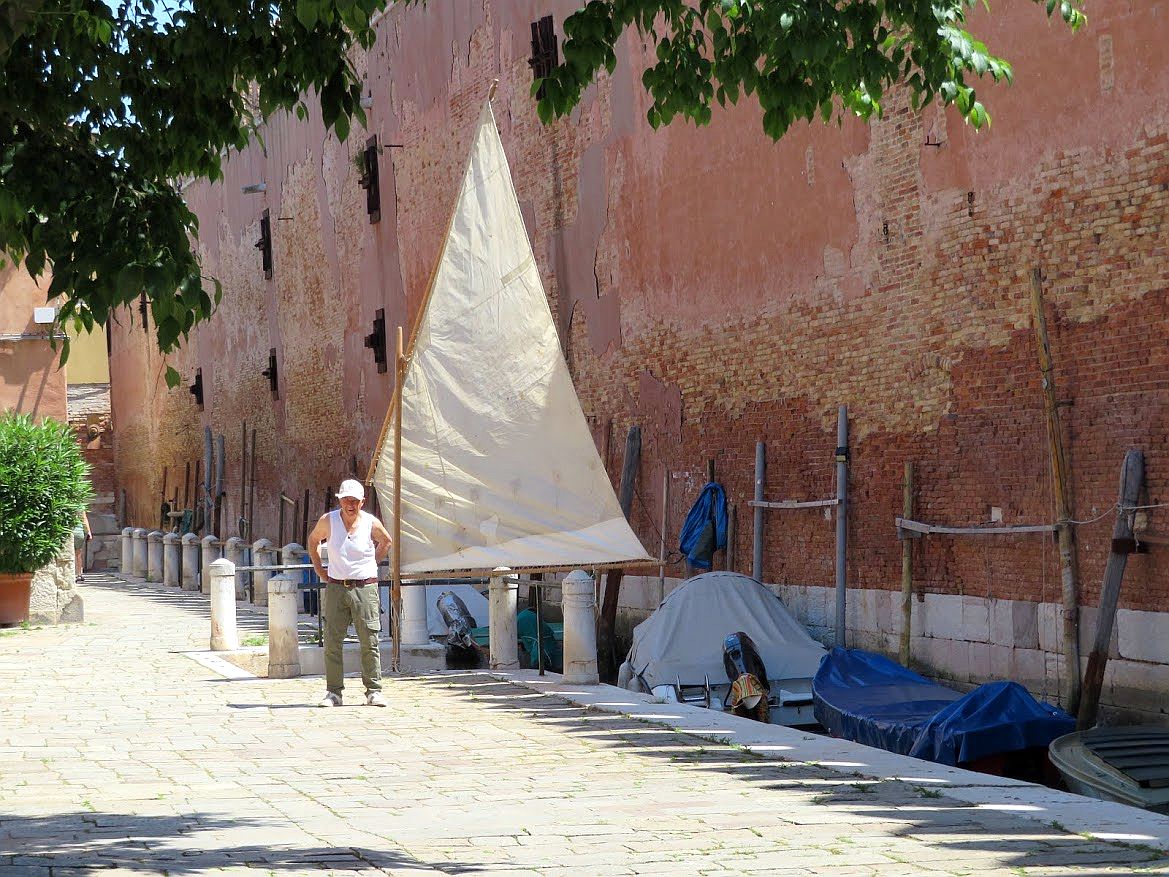
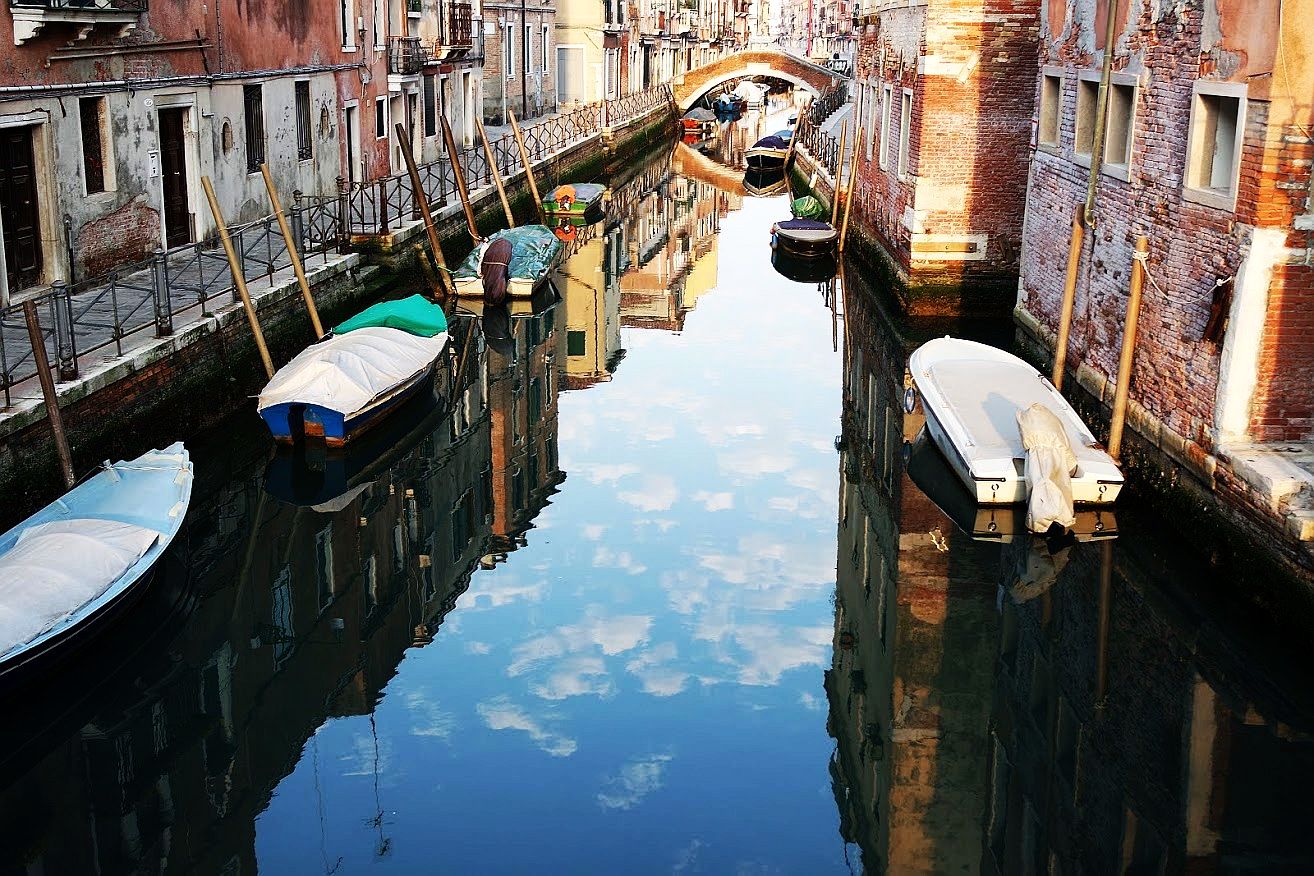
The pandemic is slowly retreating here and normal life has taken a few big summer-weekend bounces that give the city the sensation that the old days have returned. On June 2, a national holiday, there were 50,000 tourists in the city (21,000 from the Veneto, 19,000 from other Regions, 10,000 foreigners, half of which were German). However, it’s becoming clear that the old days could have used a lot of improvement.
All those months during lockdown, etc., when so many people hoped that the city could somehow benefit from the forced suspension of so many activities in order to reassess and resolve the problems of the mass tourism monoculture, was time blown away like so many soap bubbles. We’re pretty much right back to where we were in February, 2019.
For example, outdoor tables and chairs were permitted to occupy more space than strictly allowed during the Old Regime in order to accommodate the necessary social distancing; now they might just stay that way, filling up streets and campos, because now we’re used to it (though the owners won’t feel like paying an adjusted tax for occupying more public space). The aforementioned bars and restaurants and other touristic enterprises have been discovering, to their surprise, that manpower is missing. Bluntly, one out of five former employees isn’t coming back. A year and a half has passed, and waiters and chambermaids and many other toilers in the touristic fields have found other jobs. So let’s nab all the foreign workers we can for temporary (low-paid) summer work, even though they haven’t been vaccinated.
As for daily life, naturally I’m glad that people are working again, but this means we’re picking back up with motondoso and sometimes overcrowded vaporettos and cloddish tourists and pickpockets and seagulls ripping the food out of people’s hands in the Piazza San Marco and so forth, with more of the same coming up, no doubt, as restrictions continue to ease. The great forerunner is the Biennale of Architecture; it opened on May 22 and will run until November 21, B.T.U. (Barring The Unforeseen, not British thermal units.) The unforeseen has become a major player now in any undertaking, psychologically if not logistically.
So now that Venice Inc. is trying to get back underway, I paraphrase the famous remark of American President Calvin Coolidge and say that obviously the business of Venice is business. Or, as I put it, thisisvenicewheremoneyisking. And now that we can talk about business in the present tense again, I see the economic landscape, as illustrated by the shops, as divided into two basic categories. And both show the ways in which the Venetian economy has changed over the past two generations or so.
Category 1: Shops that have changed over the years. Category 2: Shops that have closed forever.
Category 1: Walking around the city, I can add my own version of what I call the Venetian litany: “I remember when that was…..”. When Lino would walk along Calle Larga San Barnaba and tell me, door by door, who used to be there, the coal seller or the fish fryer, it seemed exotic, as if change was so long ago. But now I too have seen it as it is happening.
It used to be, some 25 years ago, that when useful shops succumbed they were most often replaced by ones selling “Murano glass” or Carnival masks. Lately, though, when you see yet another useful shop disappear you can assume it will be replaced — well, certainly by supermarkets, they’re everywhere now — by bars/cafes/restaurants, or by hotels. Evidently people come to Venice to eat and sleep, as if it were a convalescent hospital.
Examples are everywhere. The best nursing home in the city is being converted to a hotel (and the worst nursing home appears to be on the same trajectory).
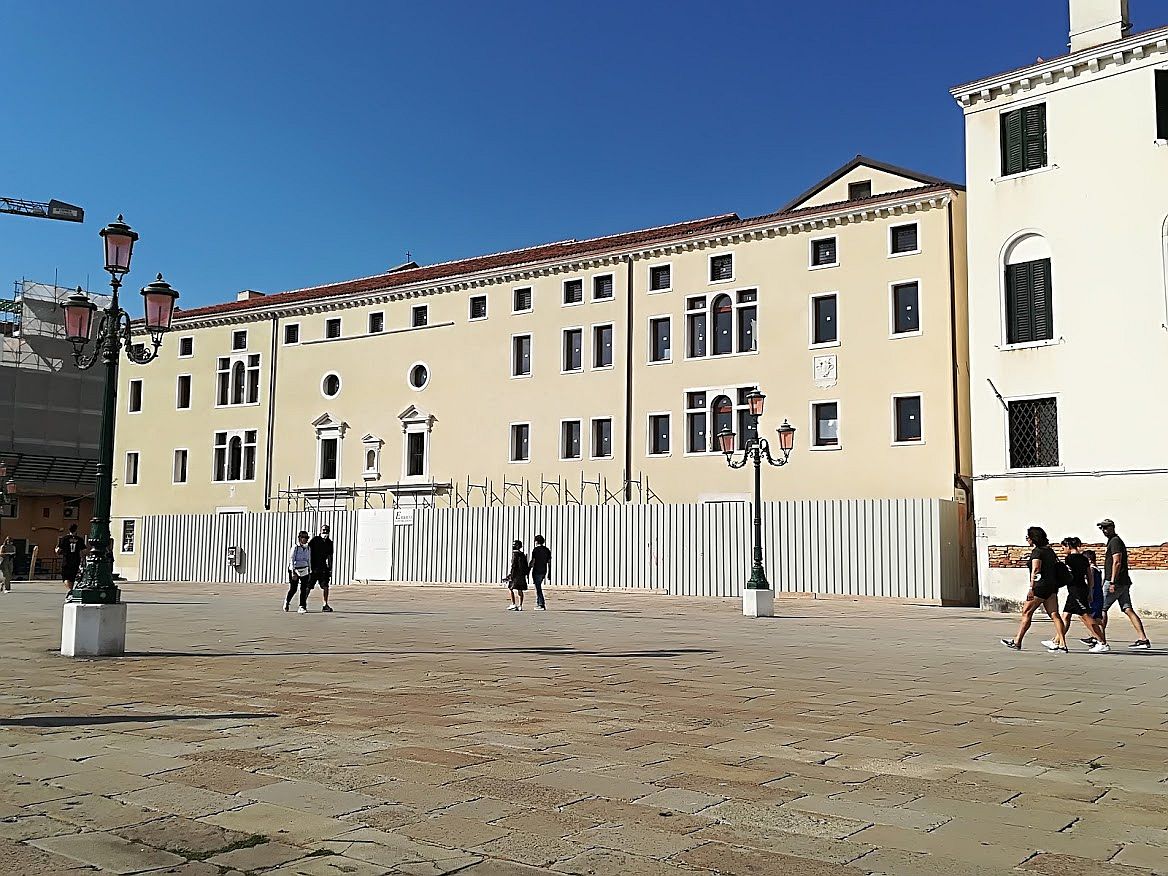
When the skeletons of the two former gas holders near San Francesco de la Vigna were up for renovation not too long ago, scores of families formed a committee to implore the city to convert them to an urgently needed multi-purpose sports center for the students of the nearby high schools. For a while it seemed as if the city had yet to decide, and then the surprise. Renovation has continued, but the citizens are out of luck because this treasure of industrial archaeology is going to be a hotel. Those are only two examples of how a facility useful to Venetians is removed to make room for something that makes money.


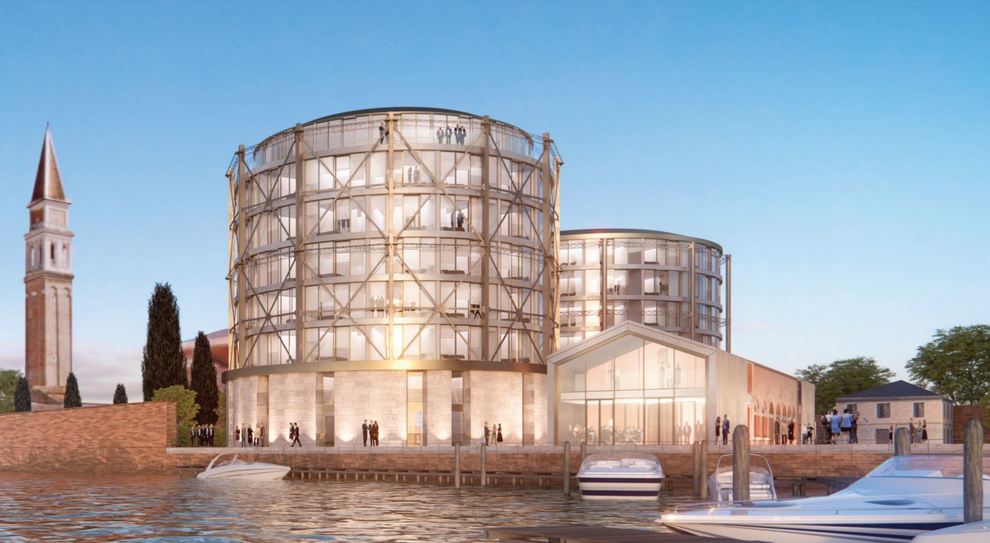
So much for hotels. Let there be restaurants!
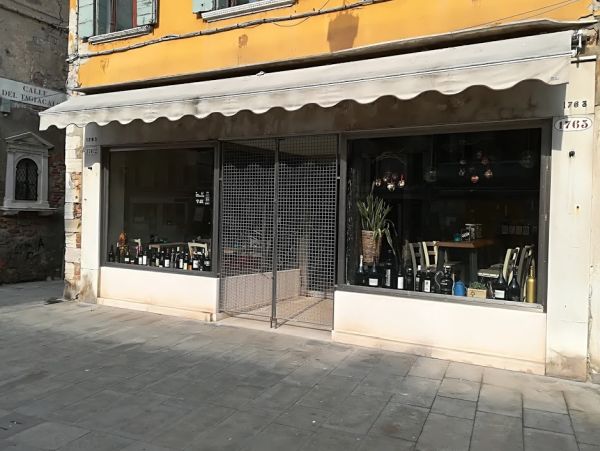
I don’t want to bore you to oblivion, but here’s a quick review of the transformation of via Garibaldi, still proudly promoted (not by us) as one of the few places where you can still find real Venetians. Yet many shops that were used every day by the aforementioned Venetians have gradually been removed, one by one. The excellent clothing store has undergone really ambitious renovation to become a restaurant (work appears to be stalled, but there are cartons of wine on the floor); the small deli/supermarket where Claudio reigned behind the case of cheese and butter is now a restaurant; a pork butcher shop dedicated to salame and other such products is a restaurant; the furniture and upholstery store became a bar and gaming salon (closed since the acqua alta of November 11, 2019); the fresh pasta and exotic ingredients shop is now Nevodi Pizzalab for takeaway pizza; a fruit and vegetable stand is now a restaurant.
On the non-comestible side, other stores have also been through various reincarnations that moved successively farther away from ordinary life. The bank became a hardware store (could have been useful except that somehow whatever you needed on Friday was expected to be delivered next Wednesday. This went on for at least two years until it folded) and now it’s a real estate agency. We miss the bank.

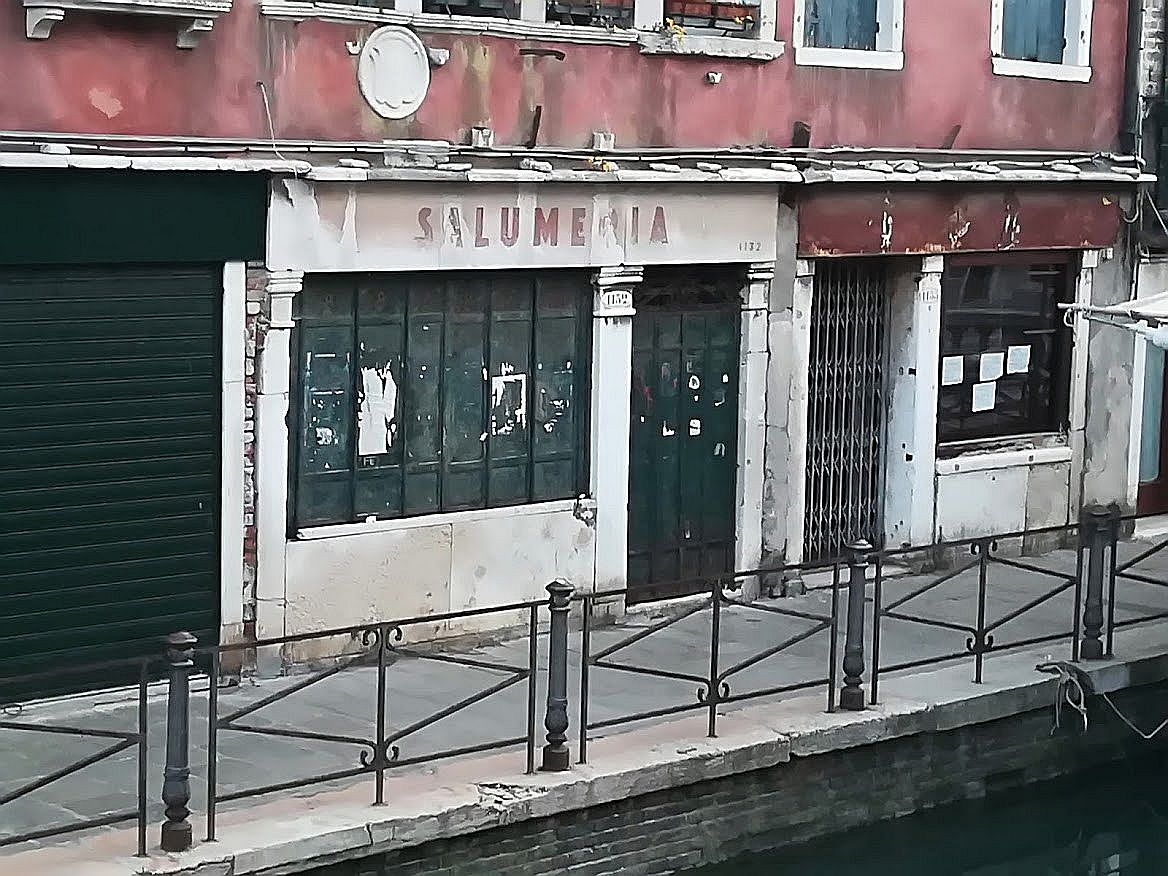
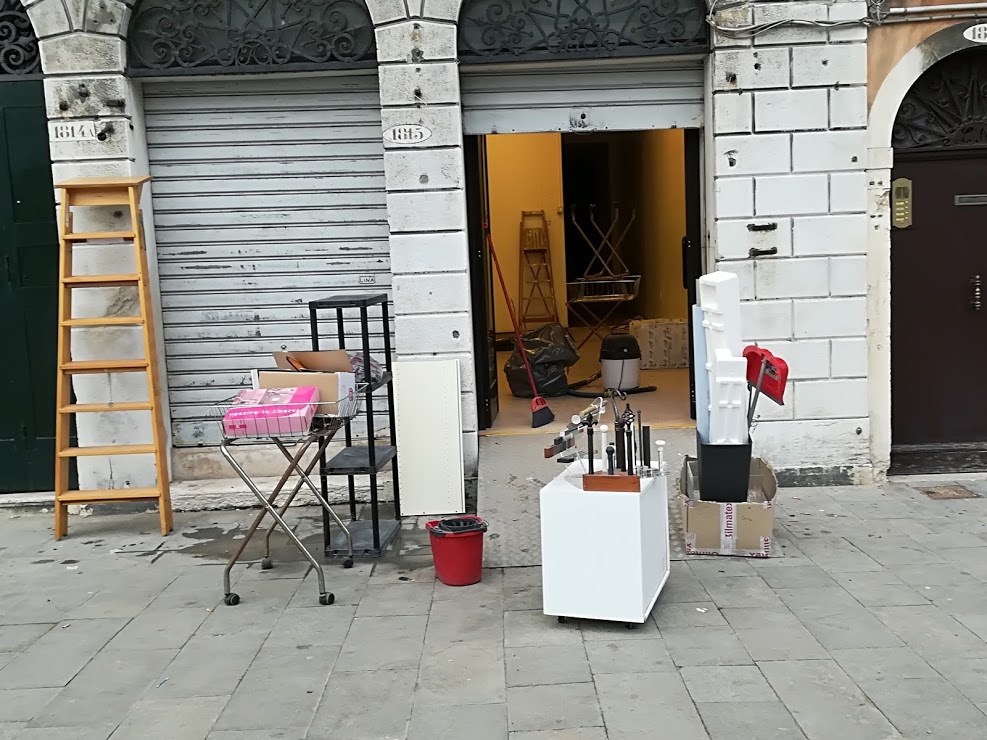
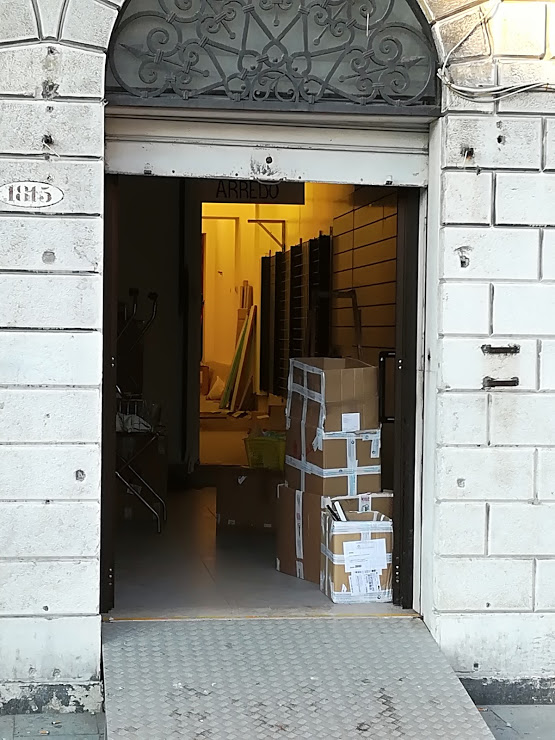
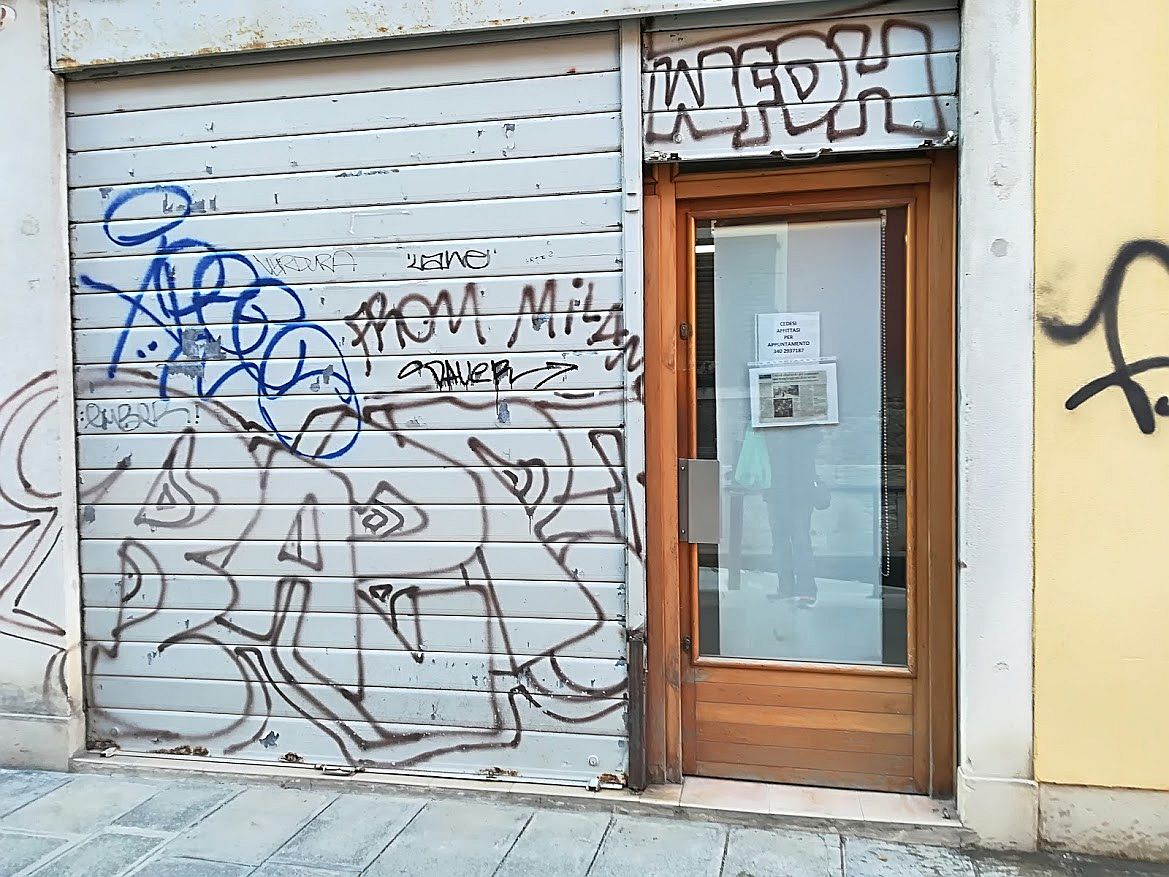
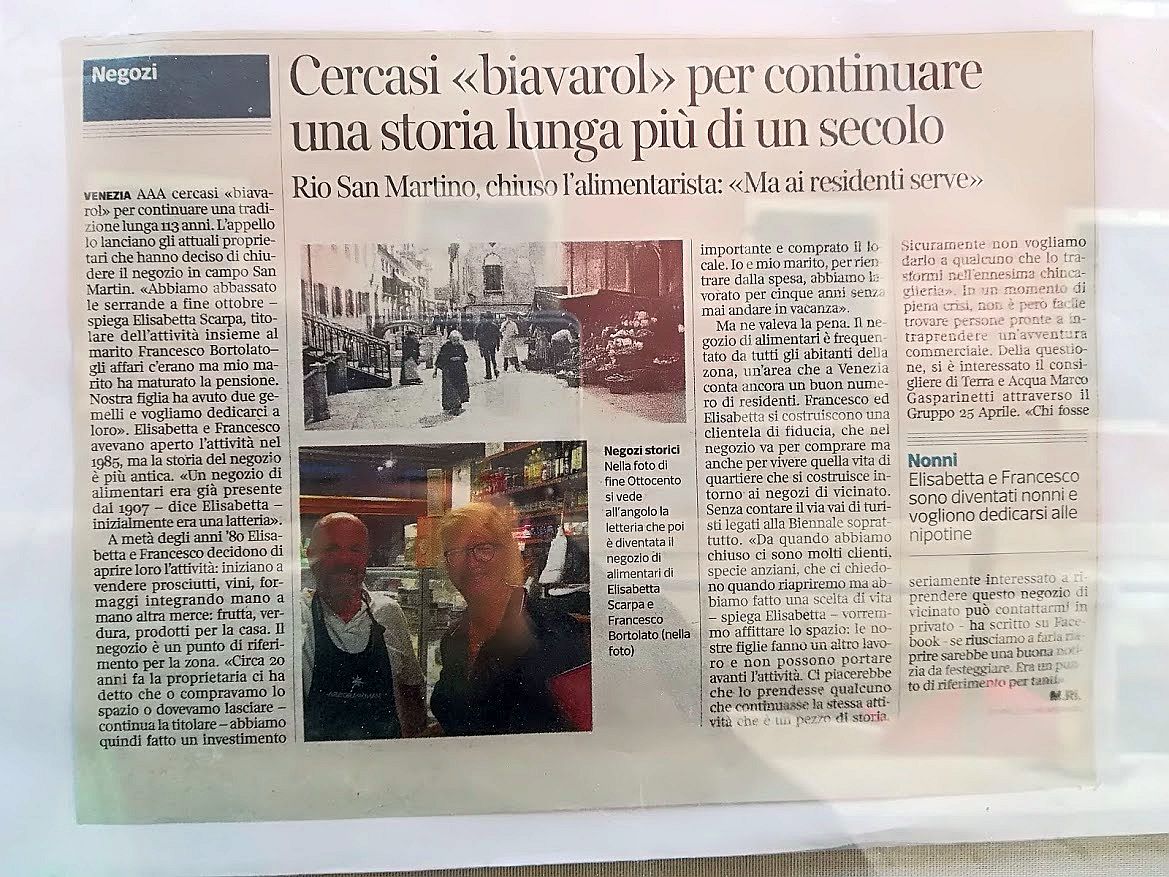
Actually, there are plenty of places that change that don’t turn into restaurants.
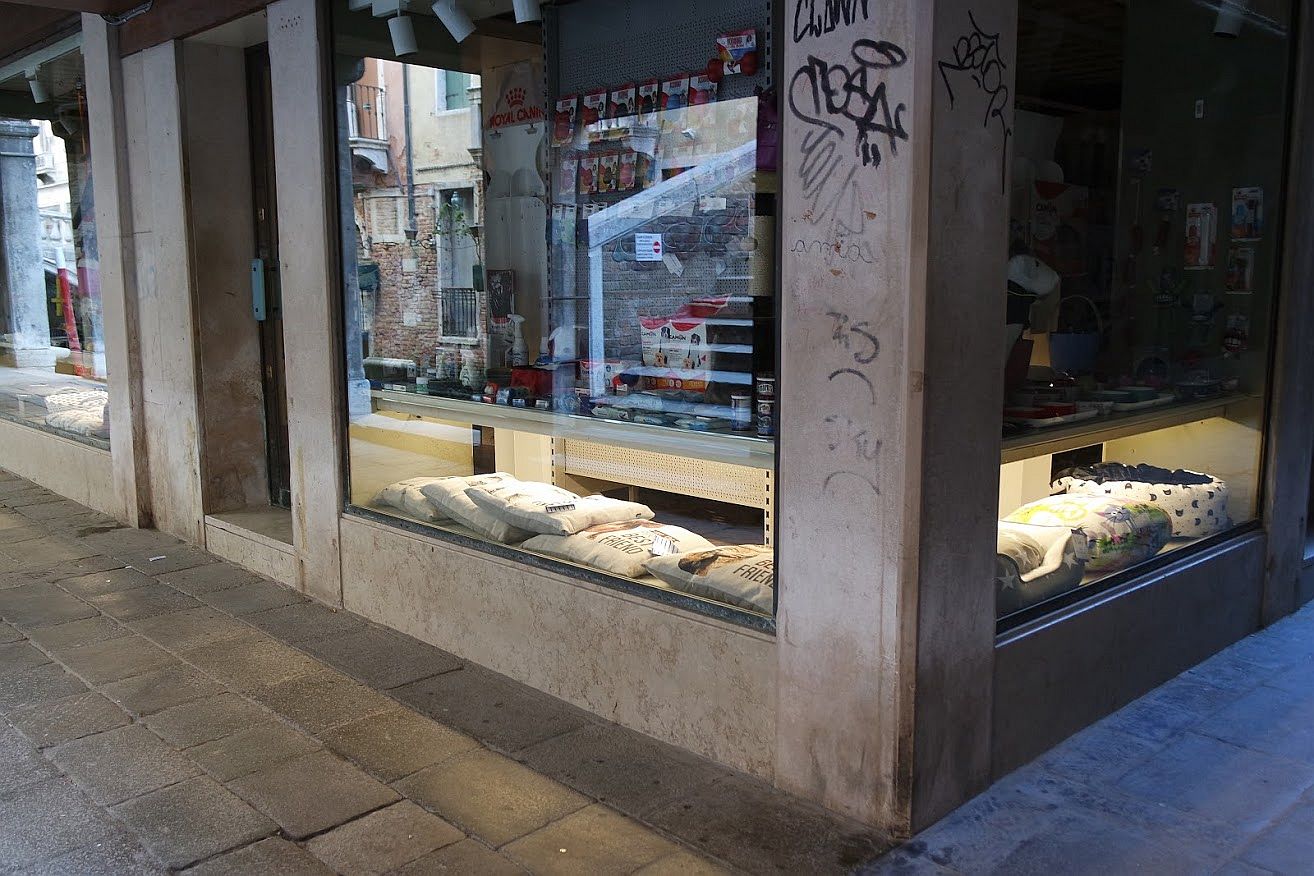
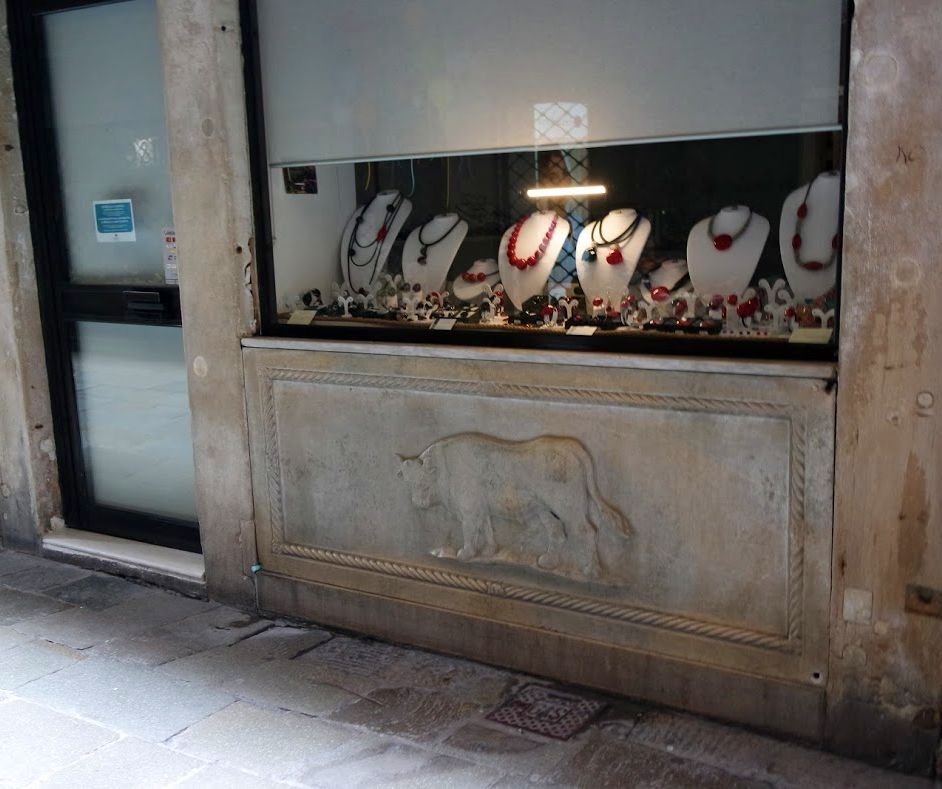
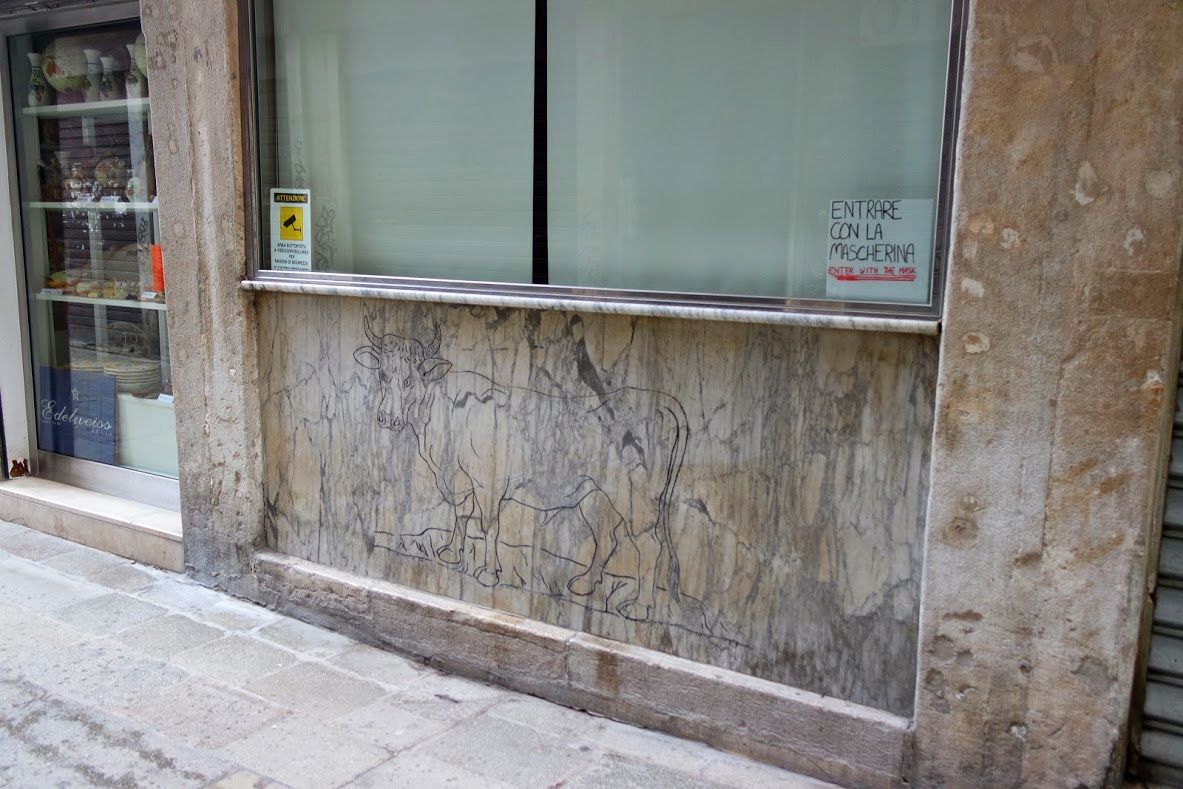
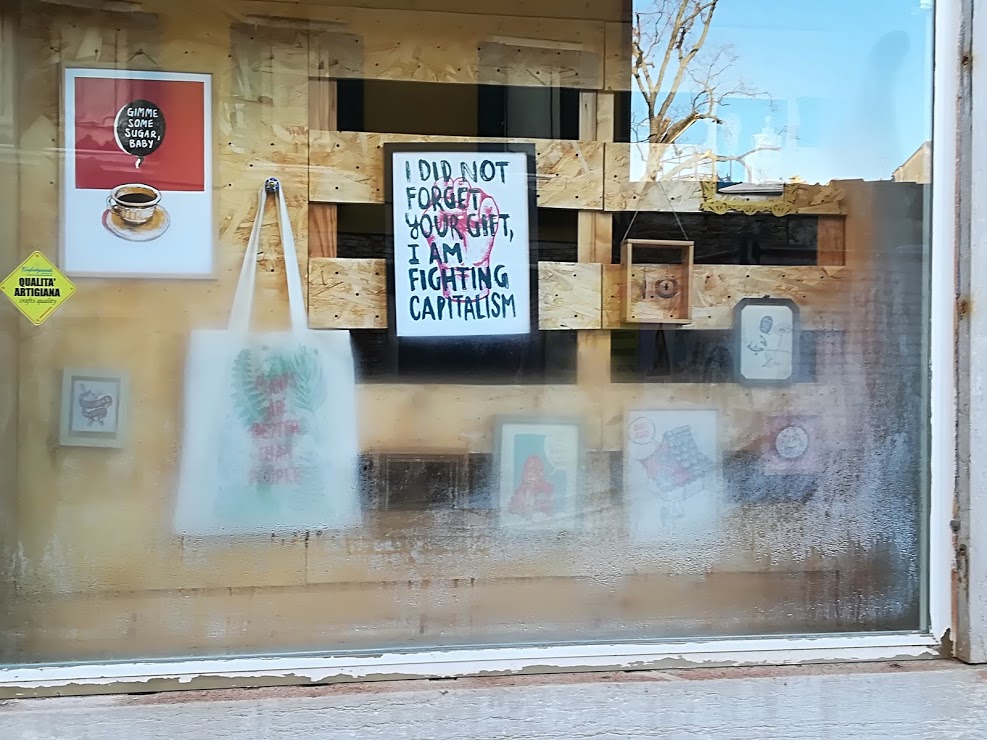
Apartments for rent: Of course this is a business too, and by now a very big one. The pandemic across Europe pretty much obliterated last year’s crop of tourists, but they are coming back. Collectively calumniated in the popular mind as “Airbnb,” apartments for tourists are offered by scores of other companies.
The continuing depopulation of Venice has left ever-more apartments empty, so of course they’ve become another commodity. Venice is far from unique in this, as we all know, but the sheer quantity has distorted (or is the result of the distortion) of Venetian life. Now that the apartments are being registered and regulated, virtually all of Venice’s some 3,000 streets (calle, calesela, ruga, salizada, ramo, etc.) has at least one door with an official tag indicating a touristic apartment within. We knew there were lots, but now that we can see them it’s a bit unnerving. Still, all those people who rail against Airbnb as the destroyer of Venetian life need to recognize that nobody has forced the apartment owner to do this, and otherwise the apartment would most likely sit empty, which isn’t a positive thing at all.
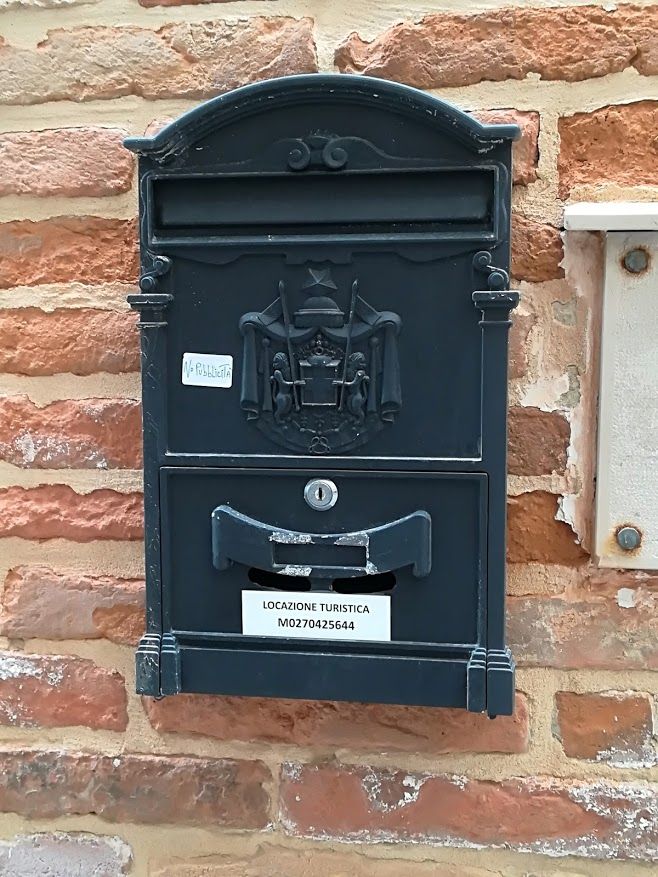
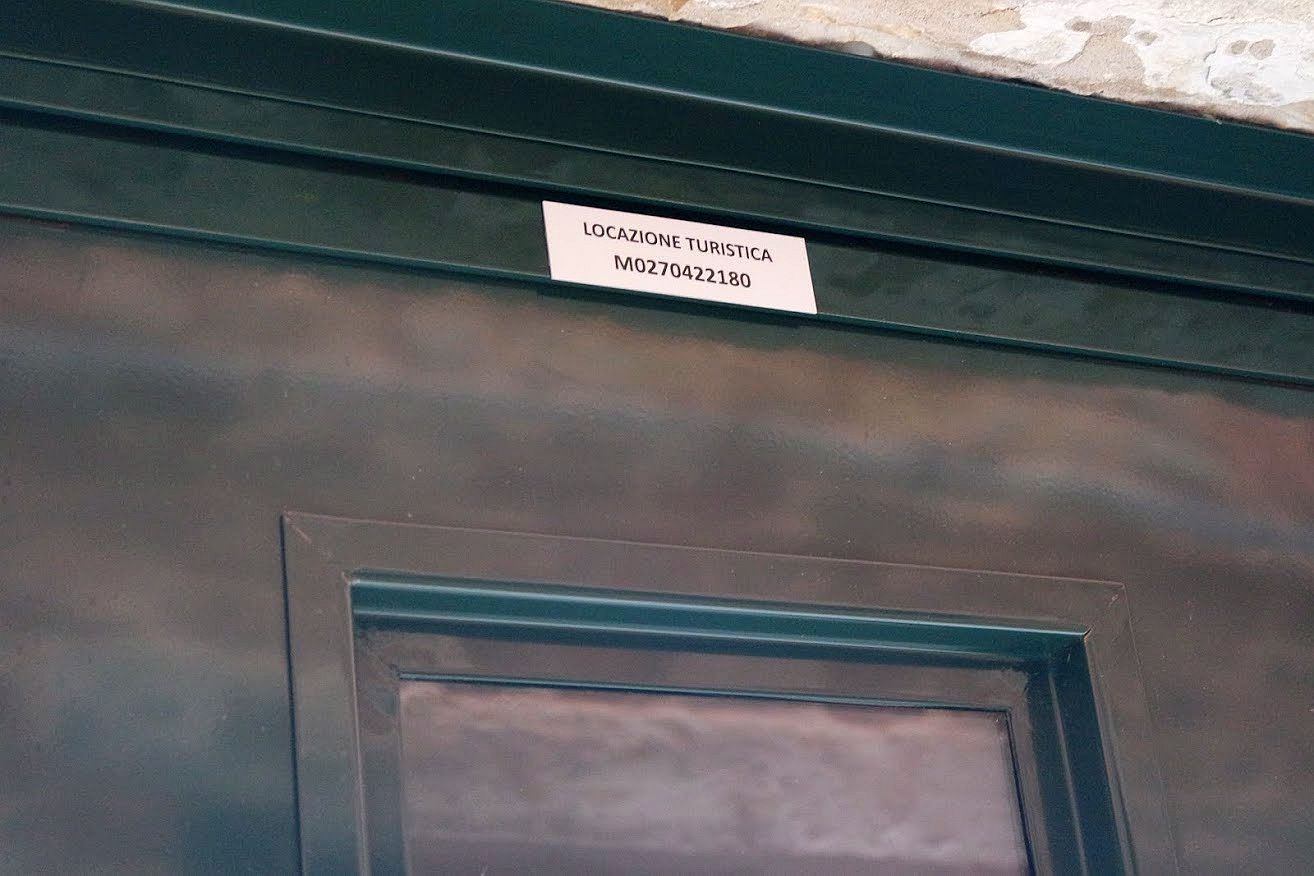
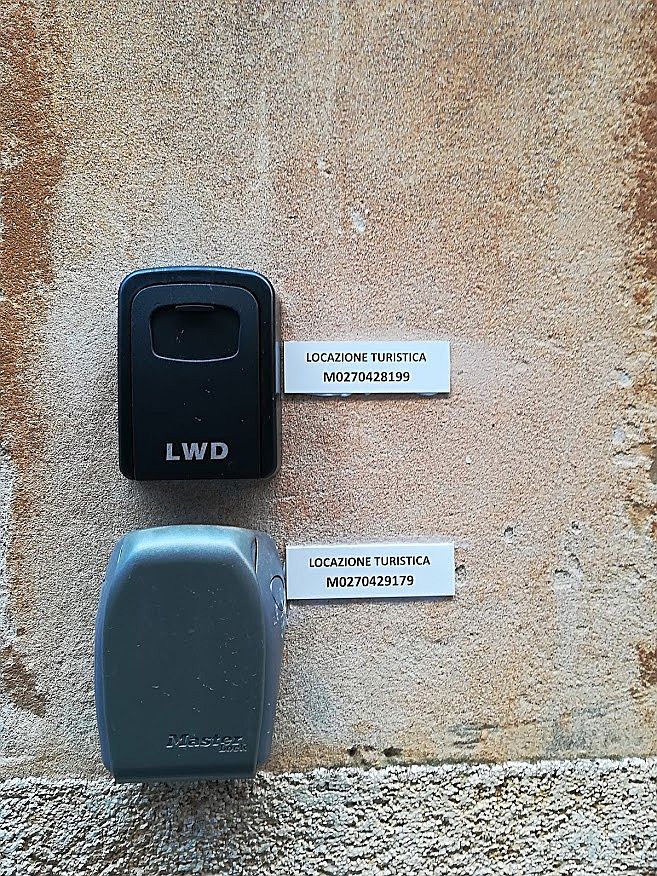
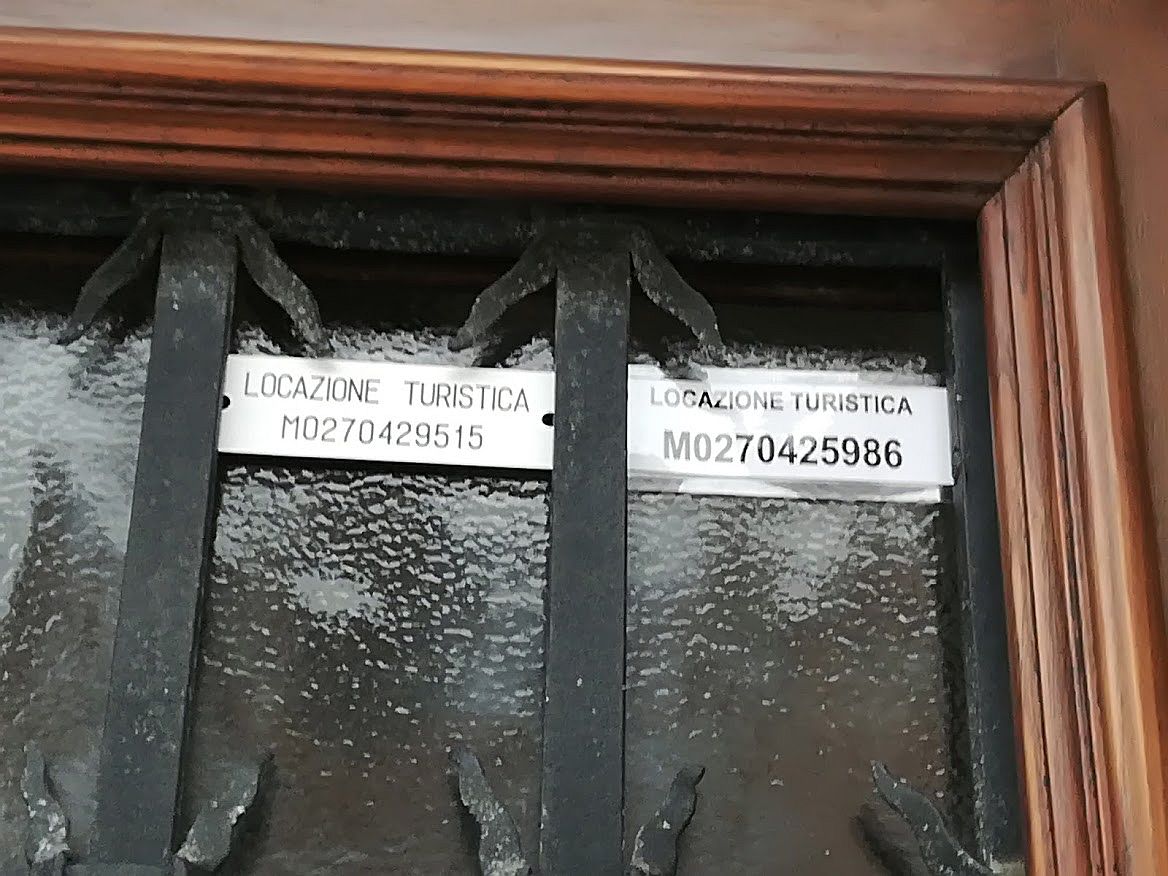
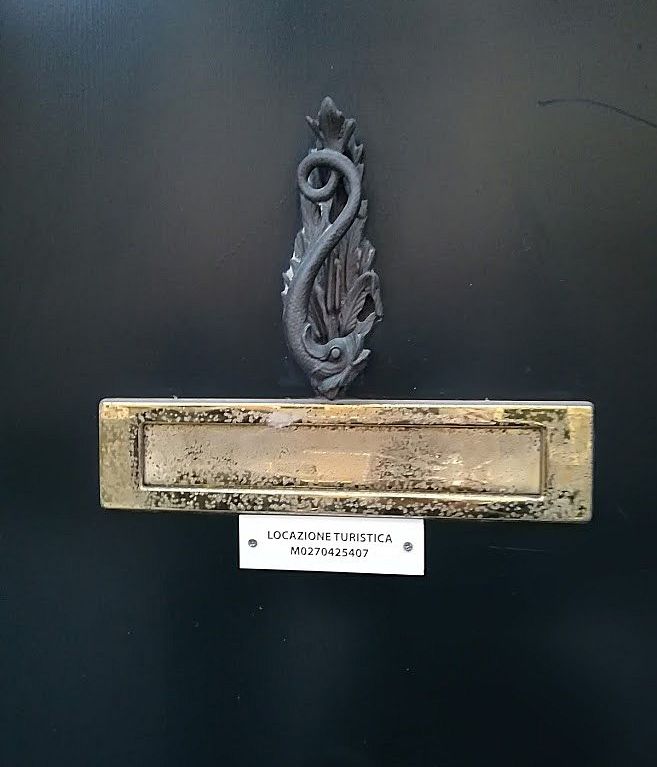
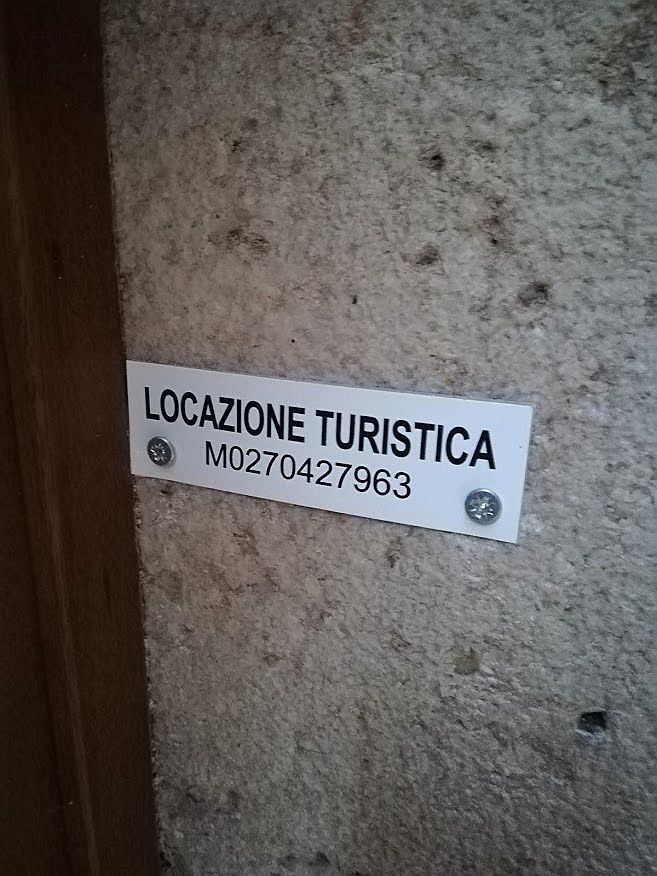
I could add a thousand more of these images, but you get the idea.
So much for Category 1, shops (and apartments) changing. Before I go to Category 2 (shops disappearing), here are some thoughts on the economics of bread.

Every morning at 6:30 a ponderous barge briskly backs up along the rio de Sant’Ana, with huge roaring, till it reaches an open space to park. One of the two men aboard jumps ashore, loads a few plastic boxes containing variously shaped bread onto his handtruck, and rolls it rapidly toward the Coop supermarket on via Garibaldi.
Exactly five minutes later he has returned with the empty boxes and the barge is roaring its way forward (there is no space to turn around) out of the canal.
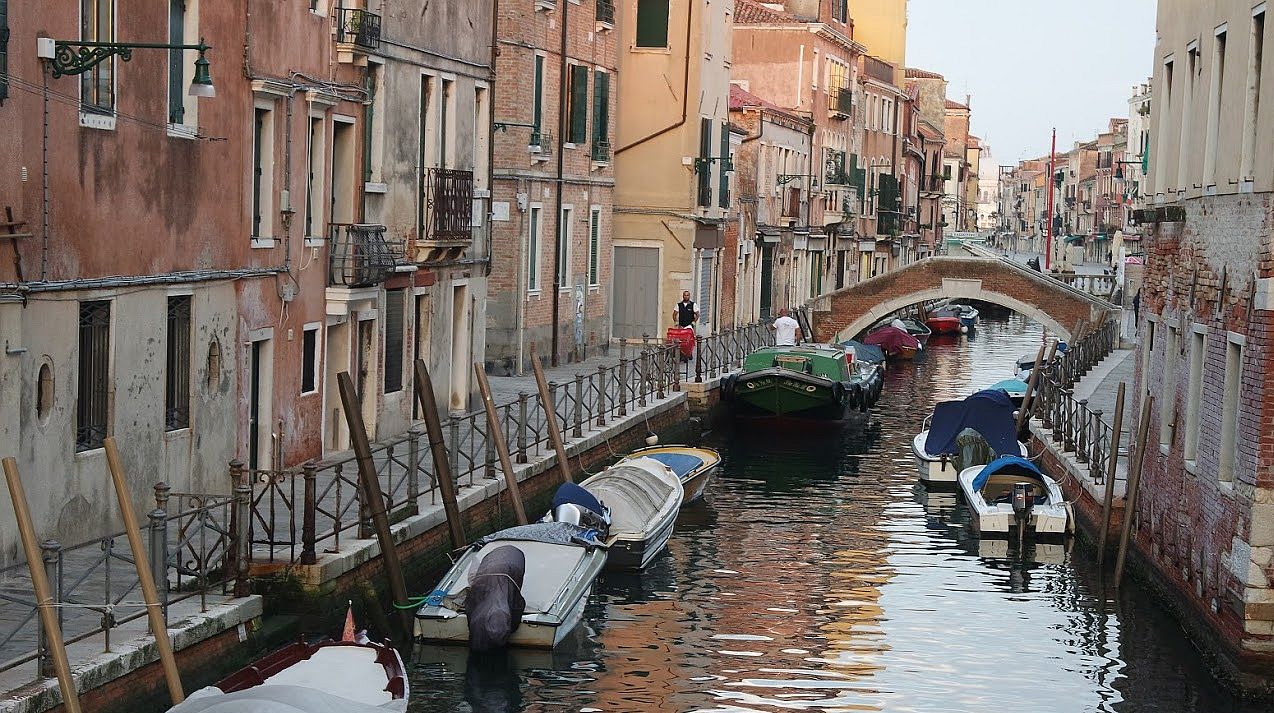
This phenomenon interests me because the barge is enormous, yet by the time it gets to us it is carrying a load that would qualify as almost nothing. Seems like a heck of a boat to use for that small a cargo, but let’s say that this is the last stop, and that the run started at 4:00 AM with ten stops and eight tons of bread. That’s not exactly my point. It seems like a huge expenditure for a small return, but clearly the formula is working fine.
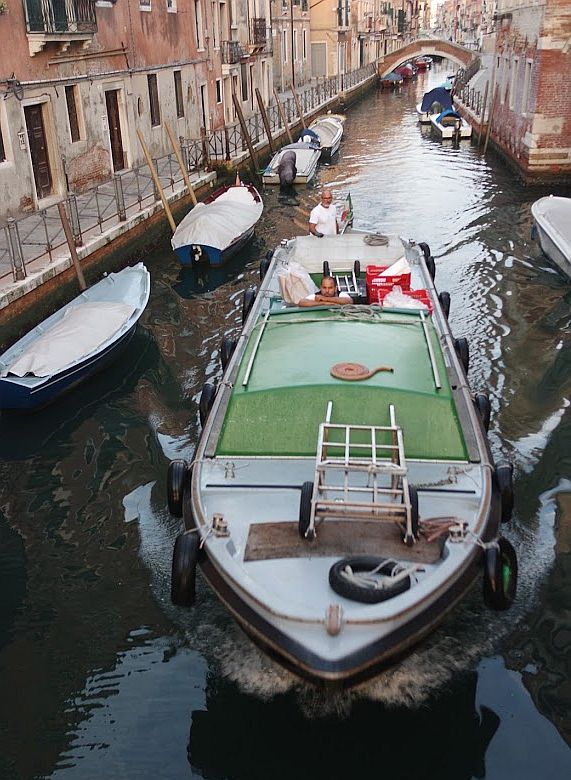
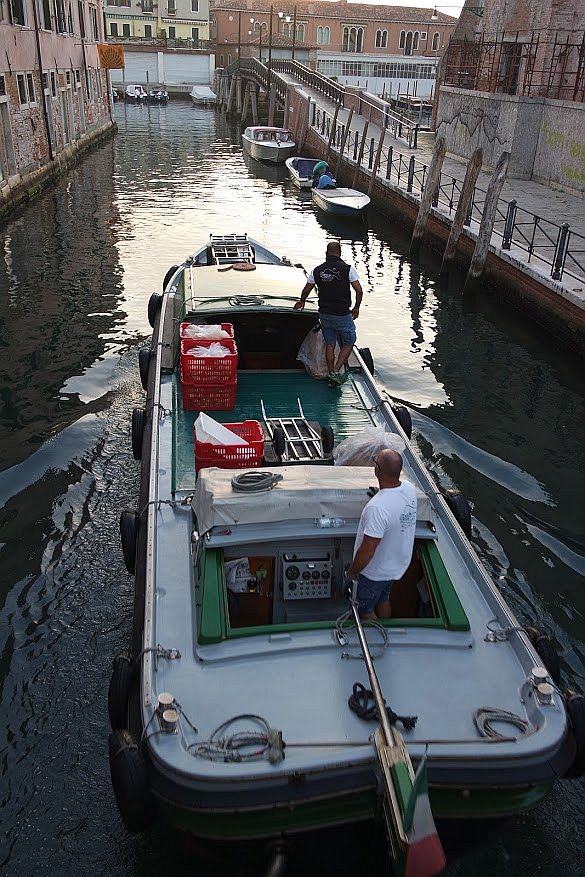
My point, however clumsily expressed, is that this is a proverbial coal-to-Newcastle situation. Within the area of about two city blocks, there are three full-time bakeries turning out bread every morning as the handtruck from who knows where rolls by. So in my primitive lizard brain, anybody who’s in favor of keeping local businesses alive ought to consider the possibility of the local bakeries supplying the supermarket, though I realize that’s slightly nuts because people could just go buy the bread straight from the baker.
So why do people buy bread at the Coop when they could buy it up the street at Crosara? Because it’s cheaper, of course. But it isn’t as good. So at the intersection of price, quality and convenience (bakeries close in the middle of the day), we see the bread on the truck at dawn a mere half hour before the first bakery opens.
Hence the eternal decision is ever-present on via Garibaldi: Save 5 cents per kilo on my daily bread even though it tastes like styrofoam, or spend the 5 cents more on something divine just out of the oven. Venice will be making money somehow in any case, because that’s the way it is.
Speaking of little shops, we come to Category 2, the most poignant witness to how Venice has changed: Shops that have closed forever. In your wanderings around the city you may have seen, but not observed, them. They are everywhere, mute witnesses to crafts and businesses and livelihoods and families that made Venice a place where life was vivid and intimate and dense.

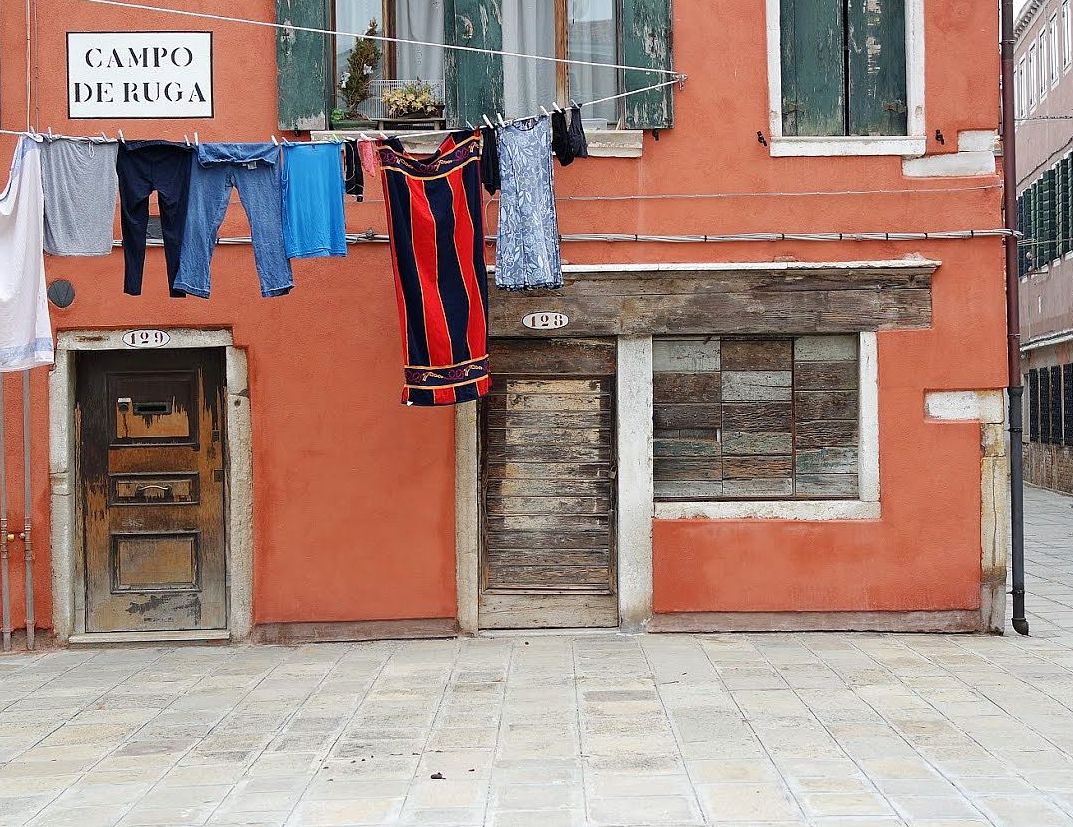


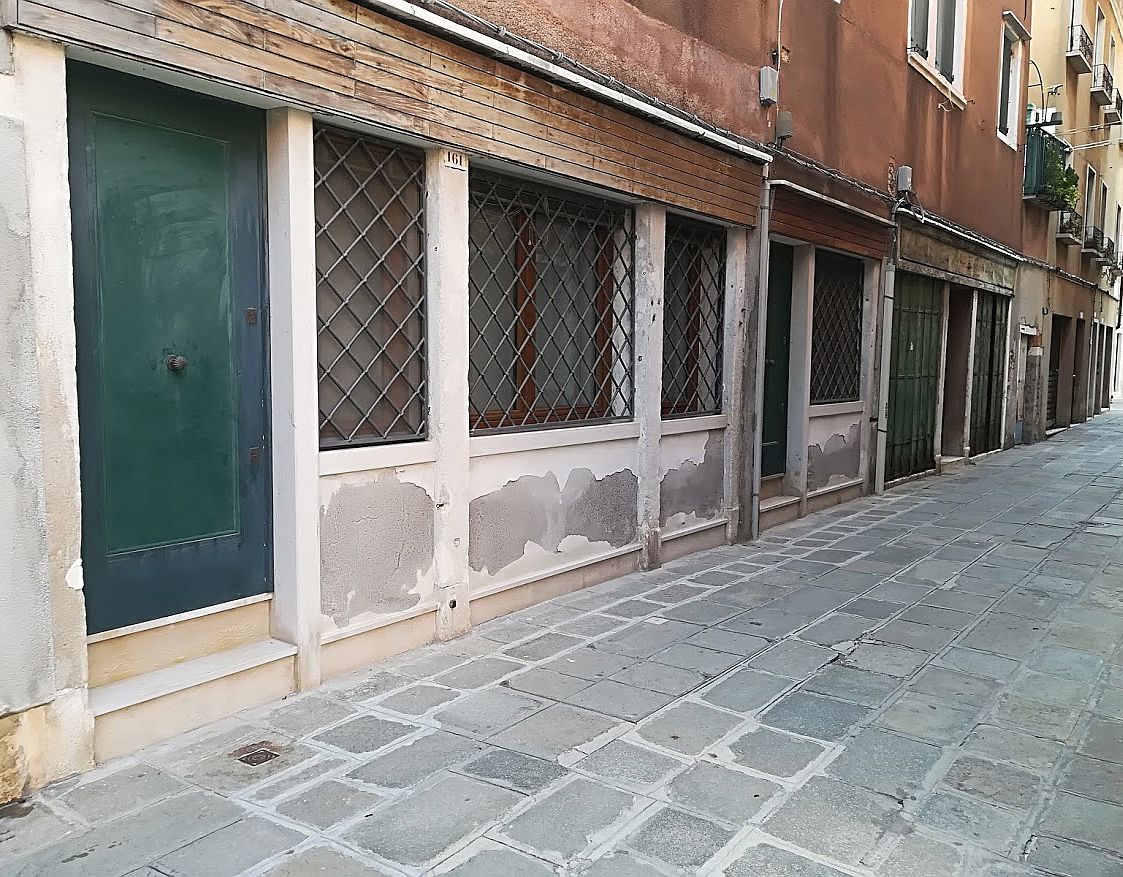
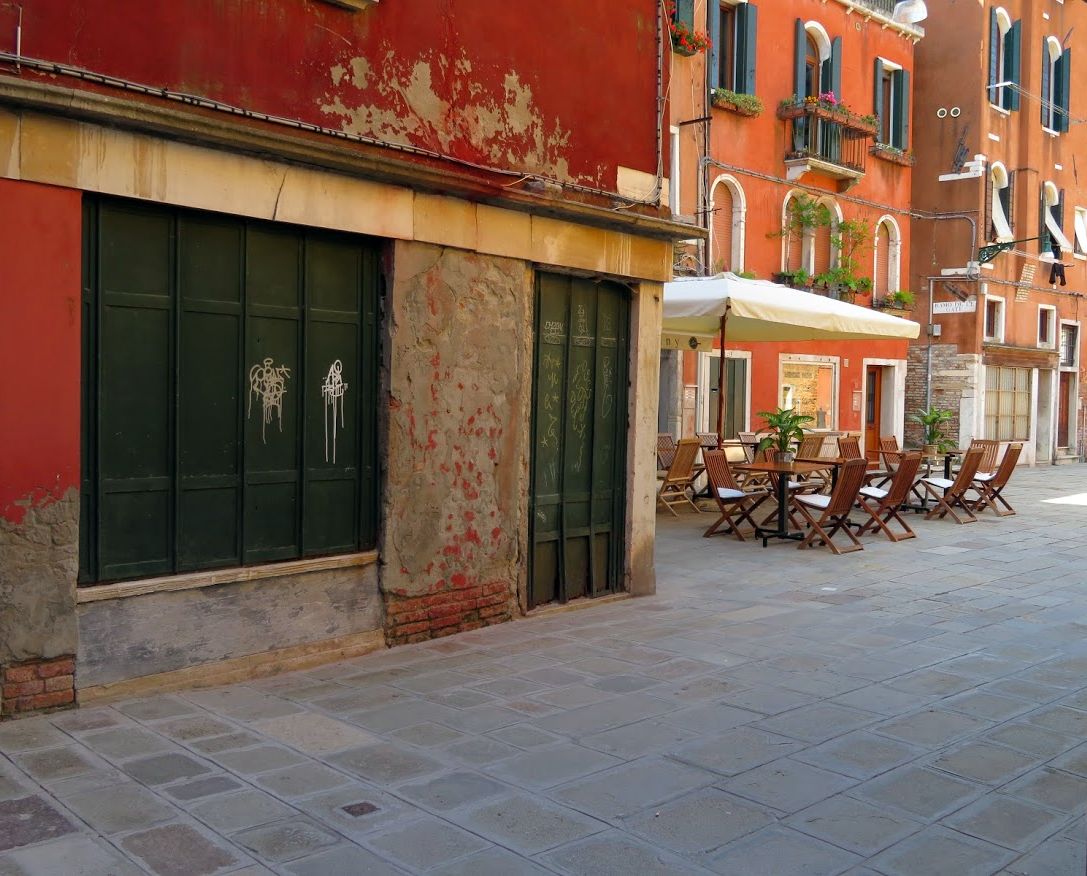
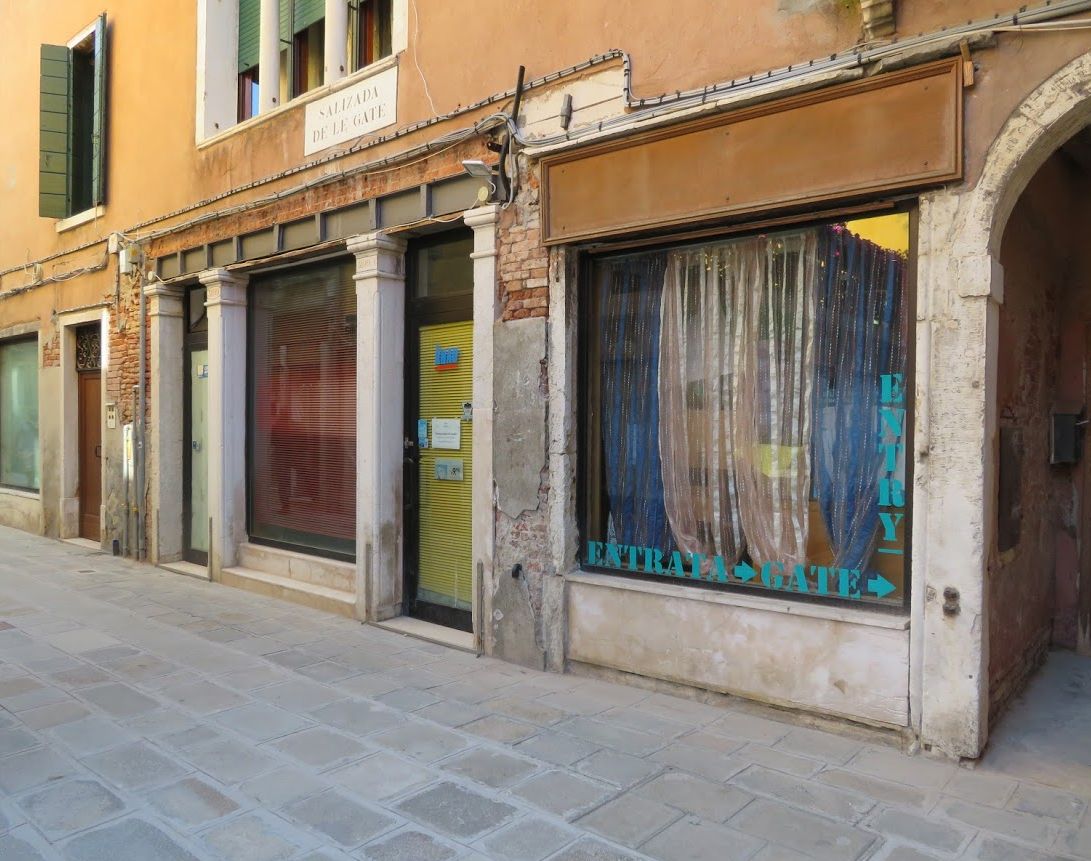
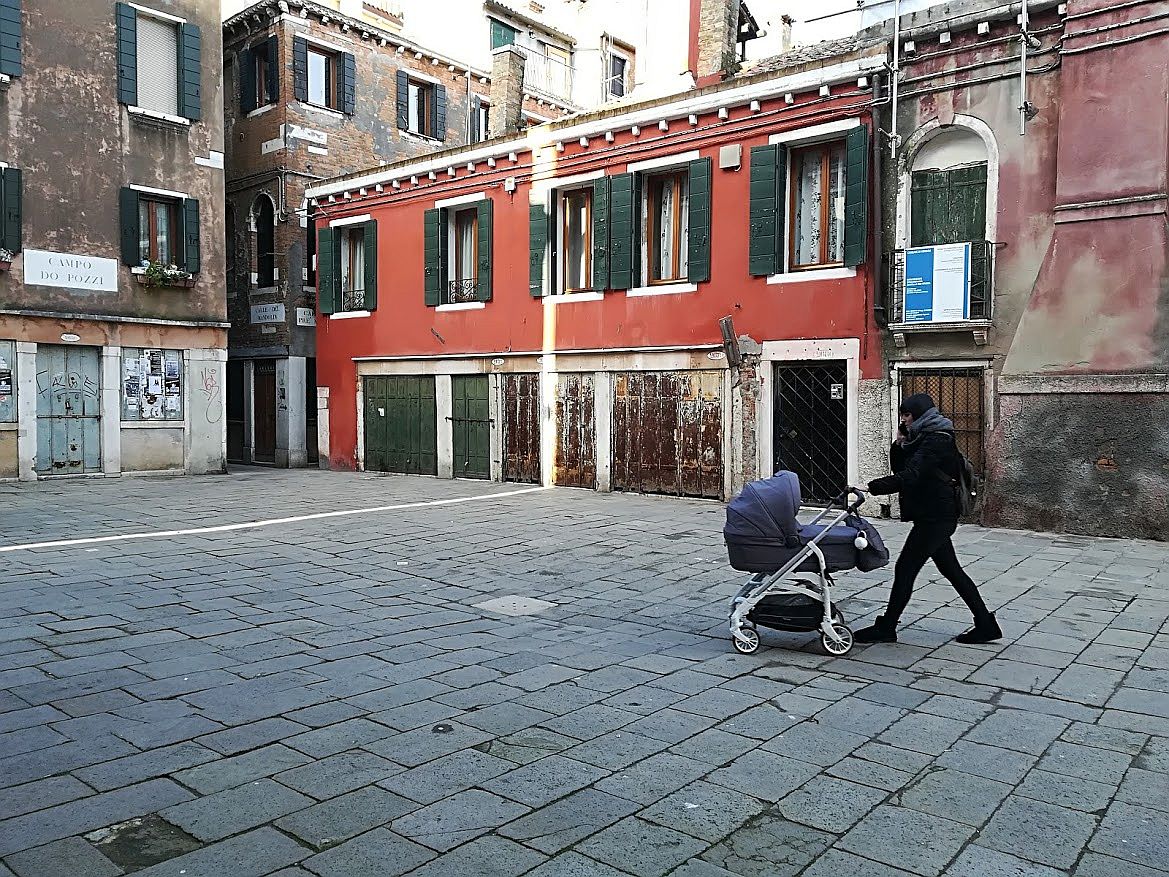
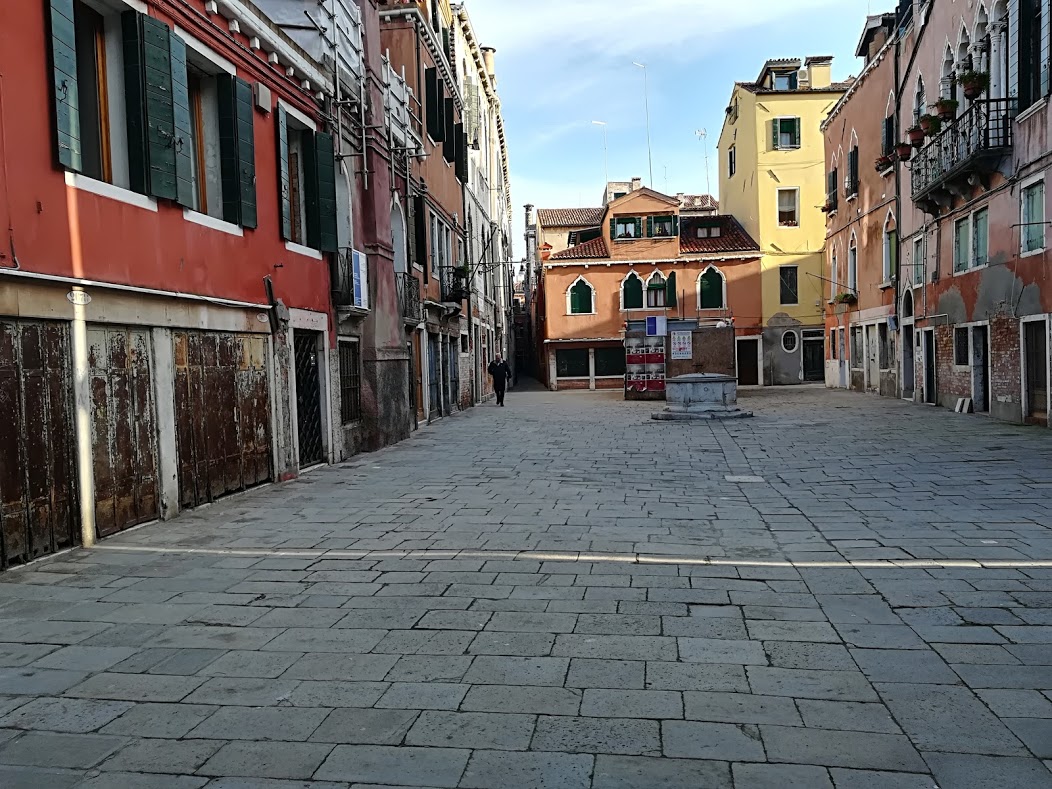
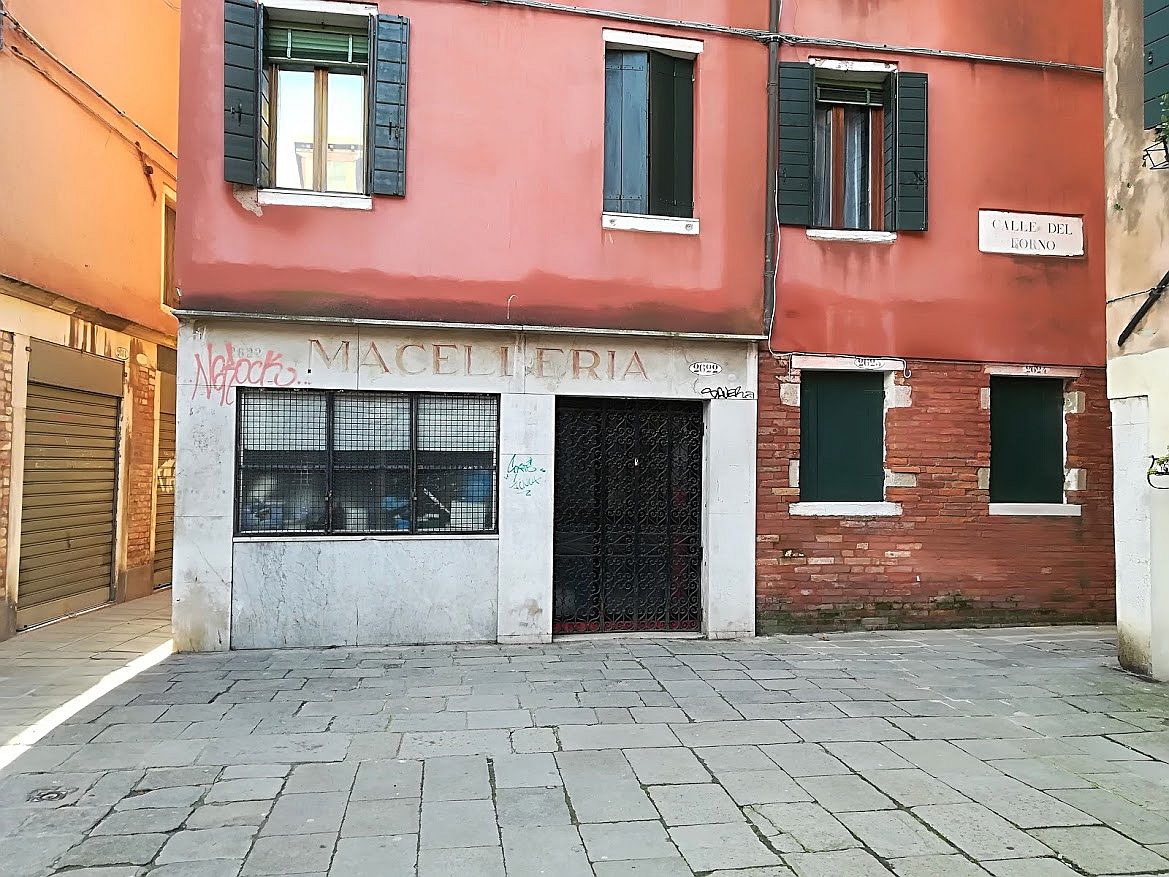
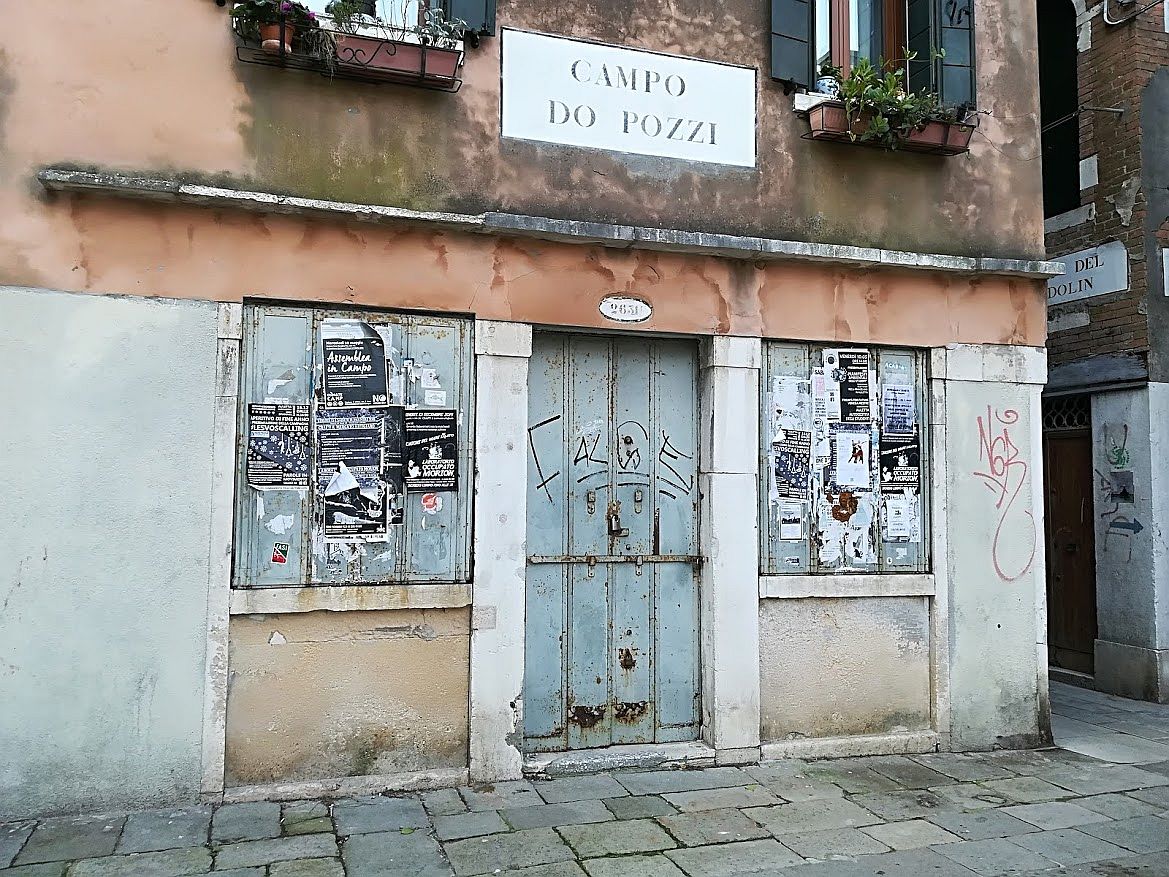
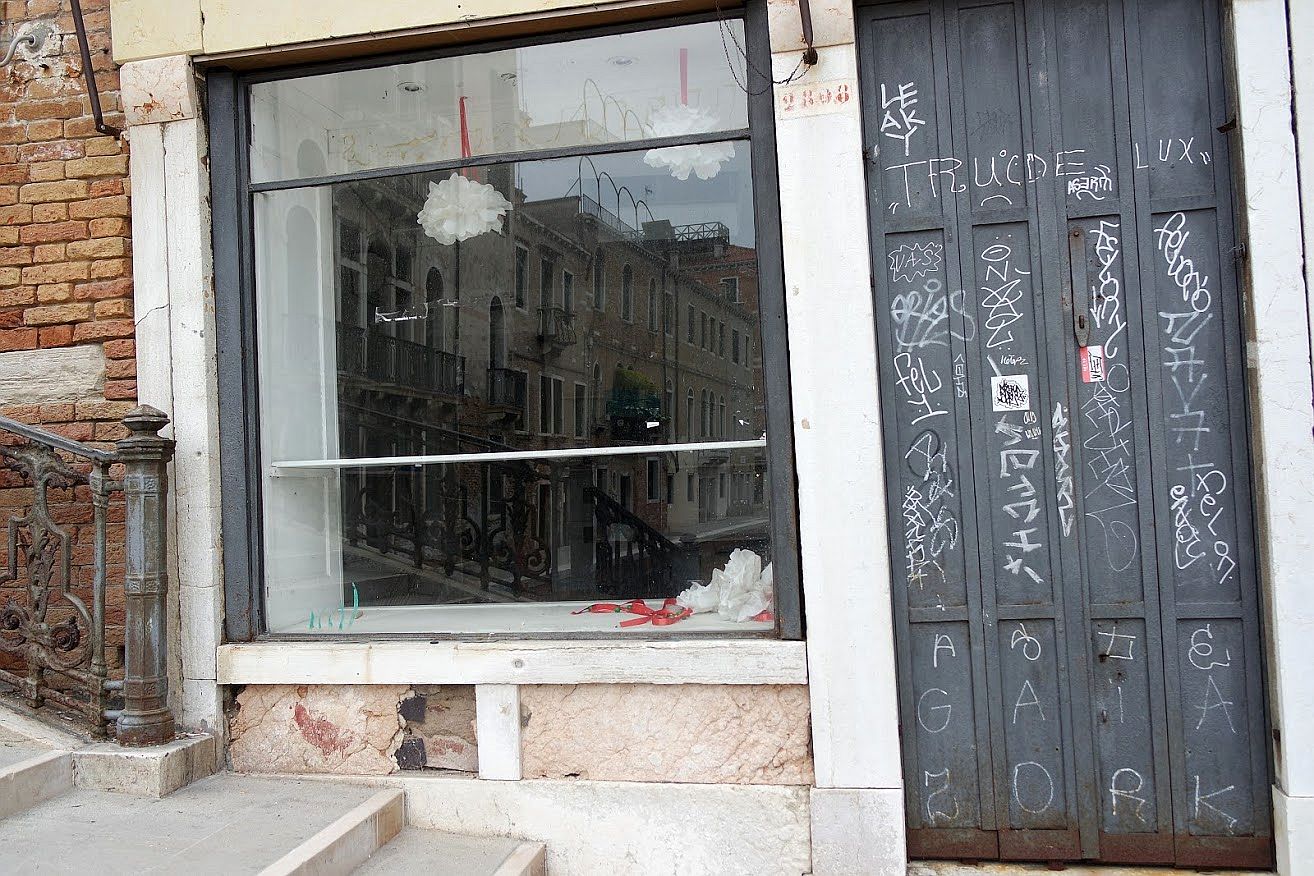
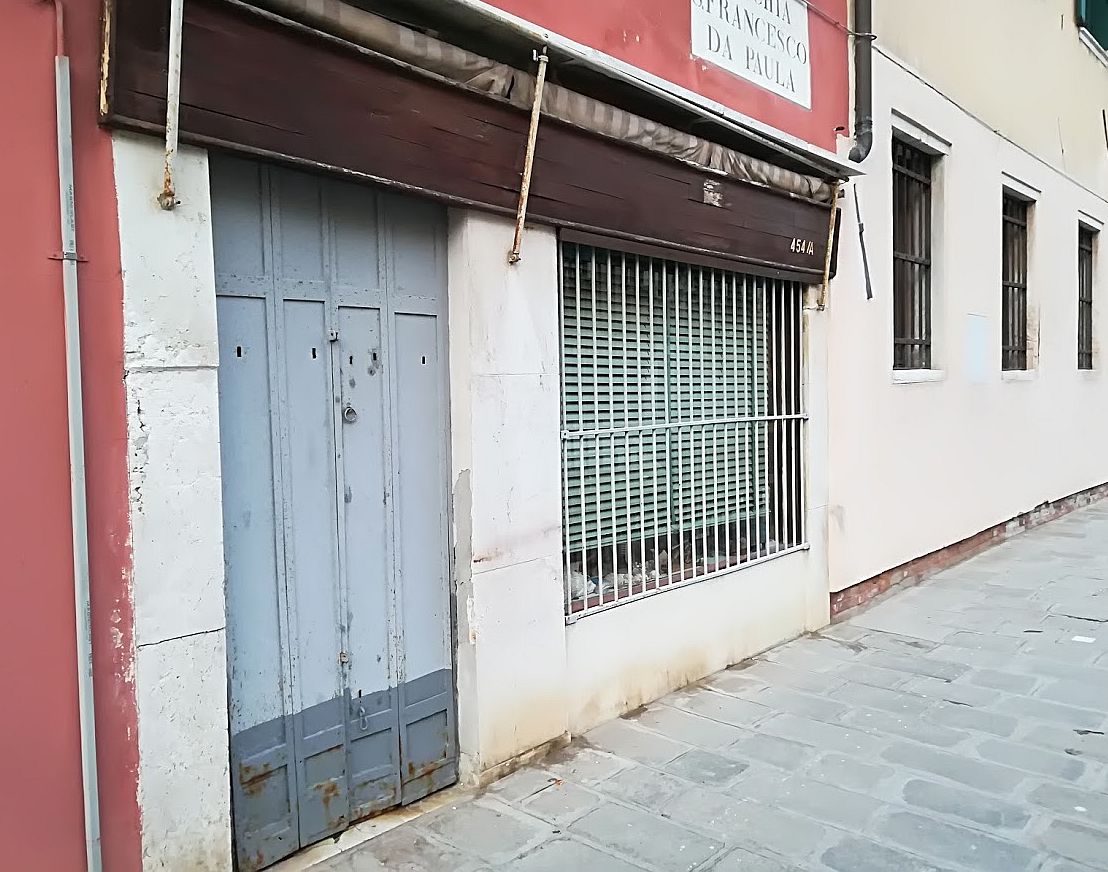
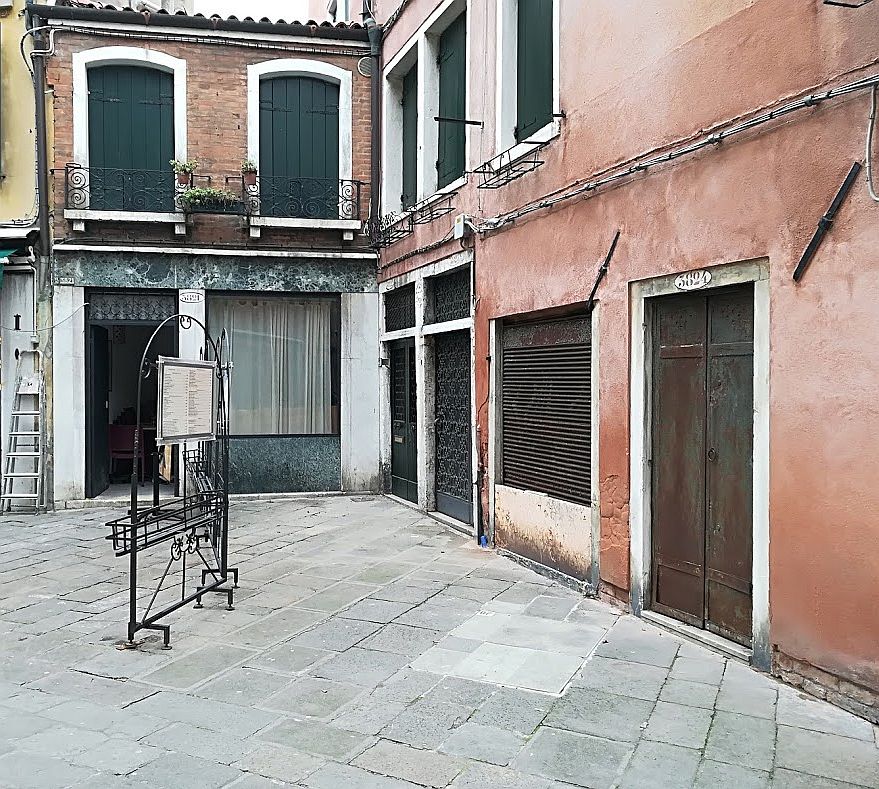

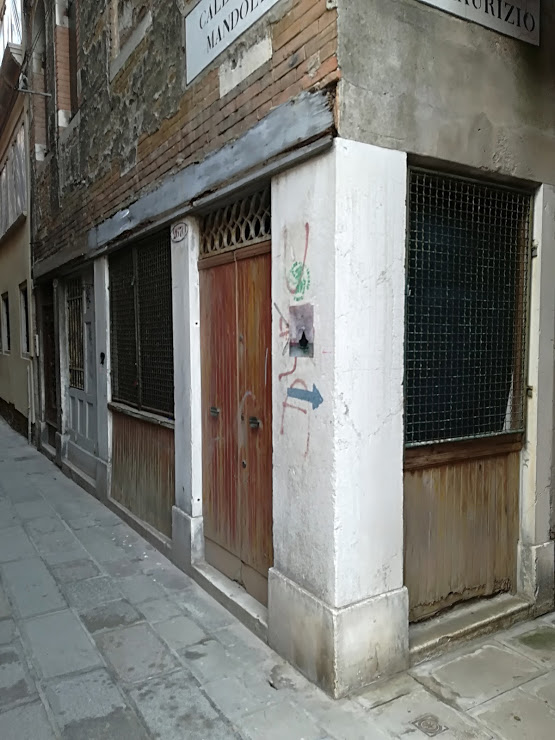


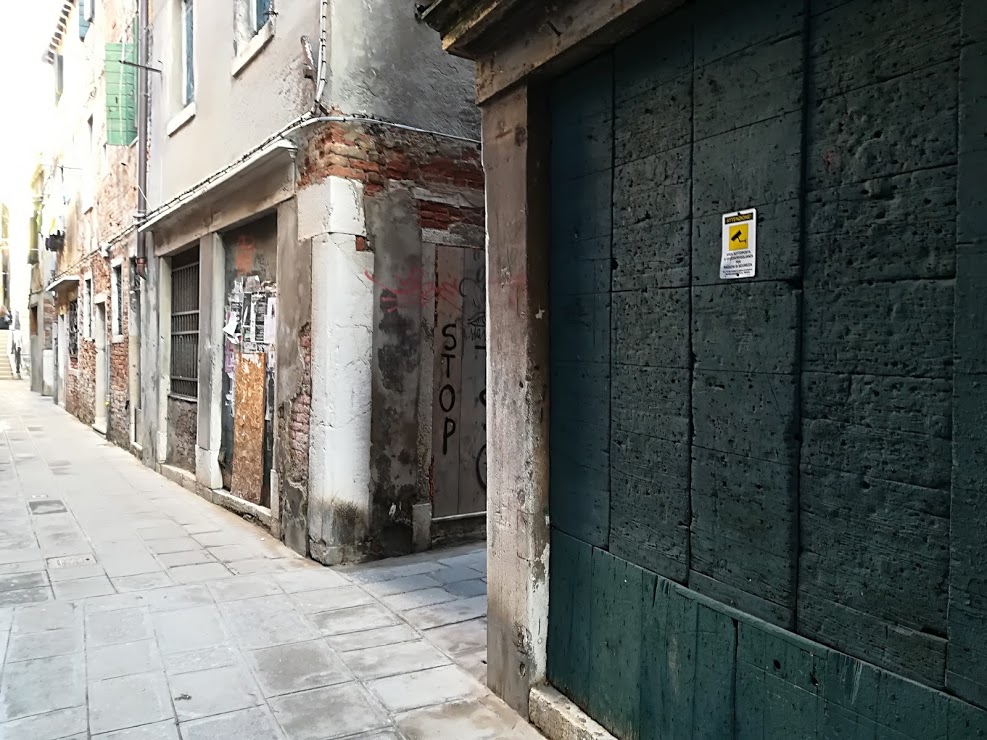
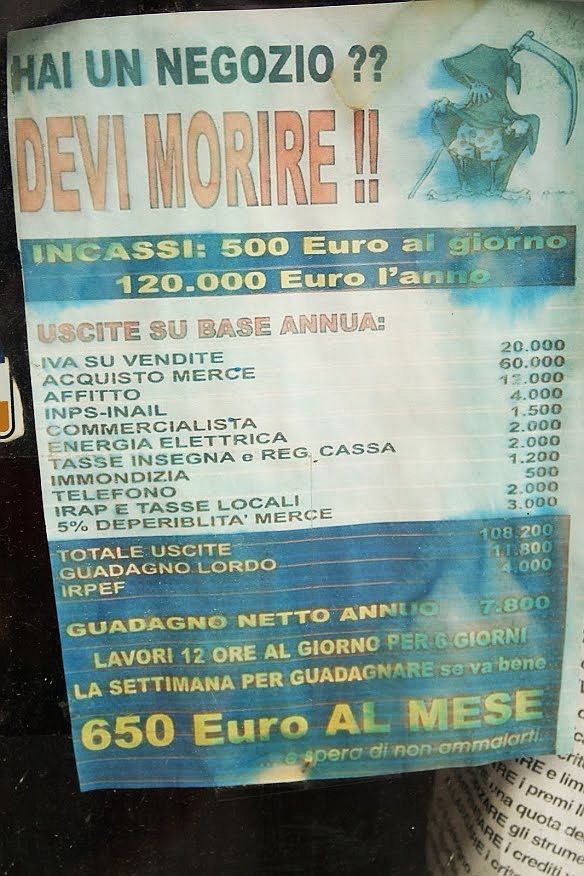
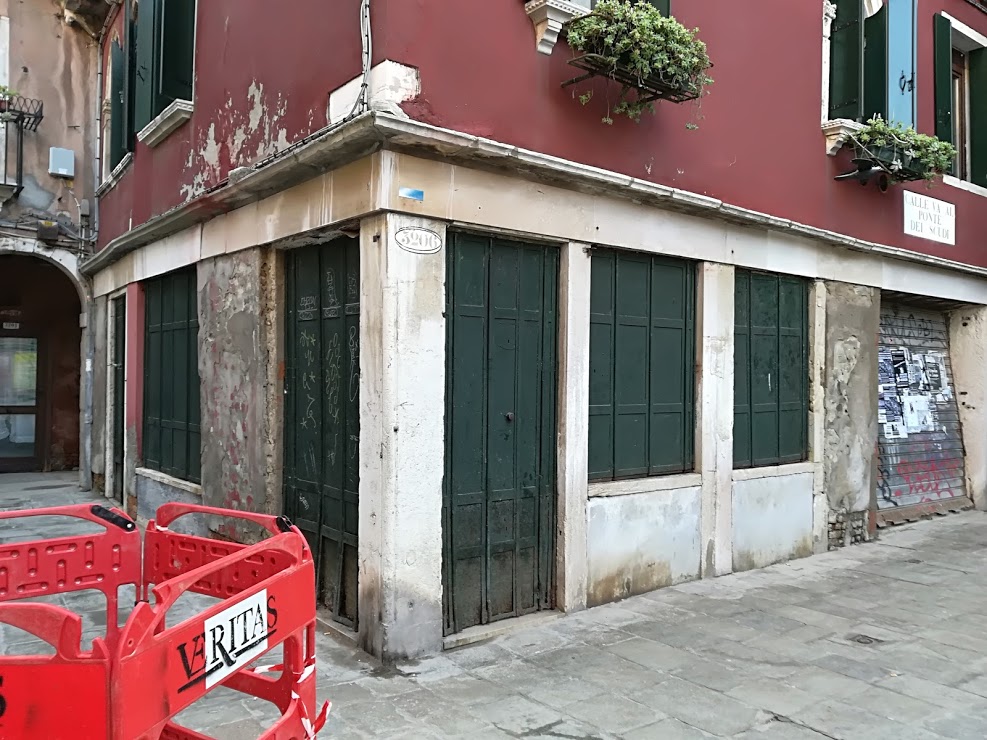
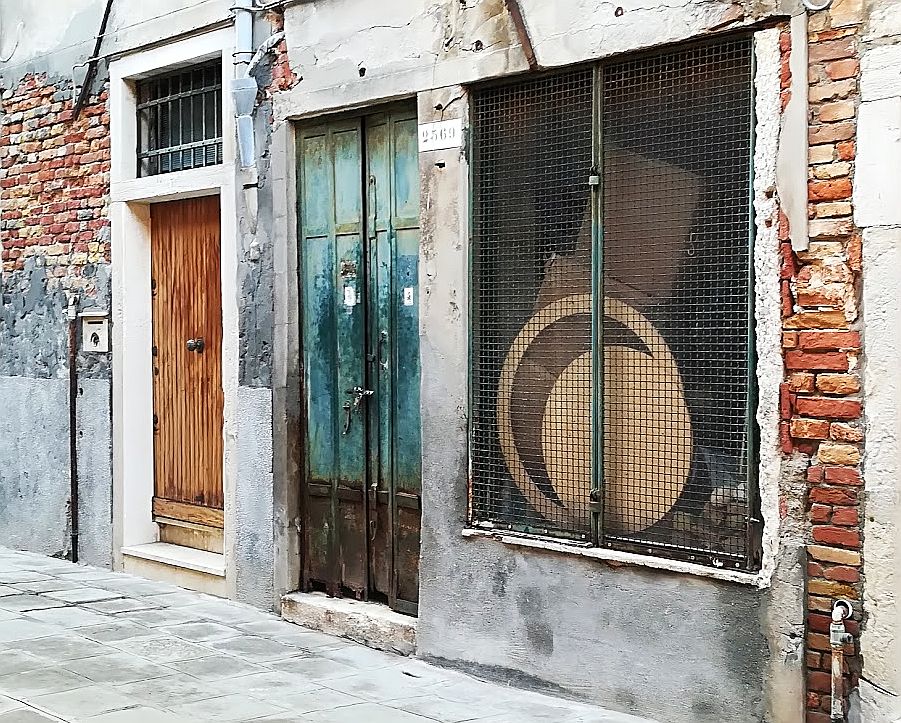

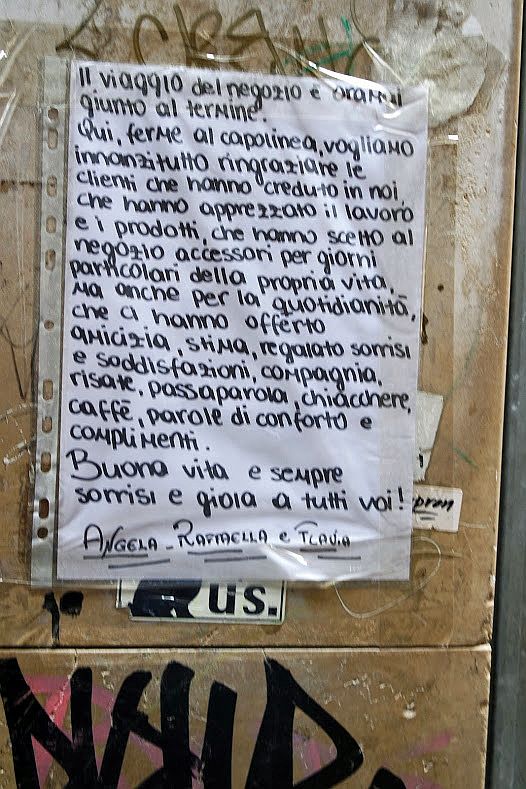

Happy Mother’s Day. We pluck this day out of the calendar to slather mothers with excessive adoration, usually ignoring the reason why we feel we have to exaggerate (the reason is simply those 364 preceding days of incessant but unthanked lion-taming that mothers perform every waking and often non-waking hour.) Looking past the holiday to the reality of your average Mom’s year, you’ll have to admit that it’s not made of flowers and chocolate and lace-trimmed cards laden with poetry. Lion taming (the lion being life, not merely the children) can become un-poetic very fast, no matter how tough your mother is.
I especially want to recognize mothers’ uncanny ability to say so much using so few words. And the truly amazing thing is that mothers say the exact same things in each of the 7,139 languages in the world. The universal language is not Esperanto. It’s Momspeak.
Any Venetian of any age will recognize the common expressions listed below — as will you — either from having said them or, as a child, having heard them. And if some of these apothegms seem unreasonably violent, just remember that she was almost always driven to it. By you. If we’re being honest.
So as you read, send a silent salute to your mother, wherever she is. And I’d love to hear from anyone who was, in fact, born in a barn.
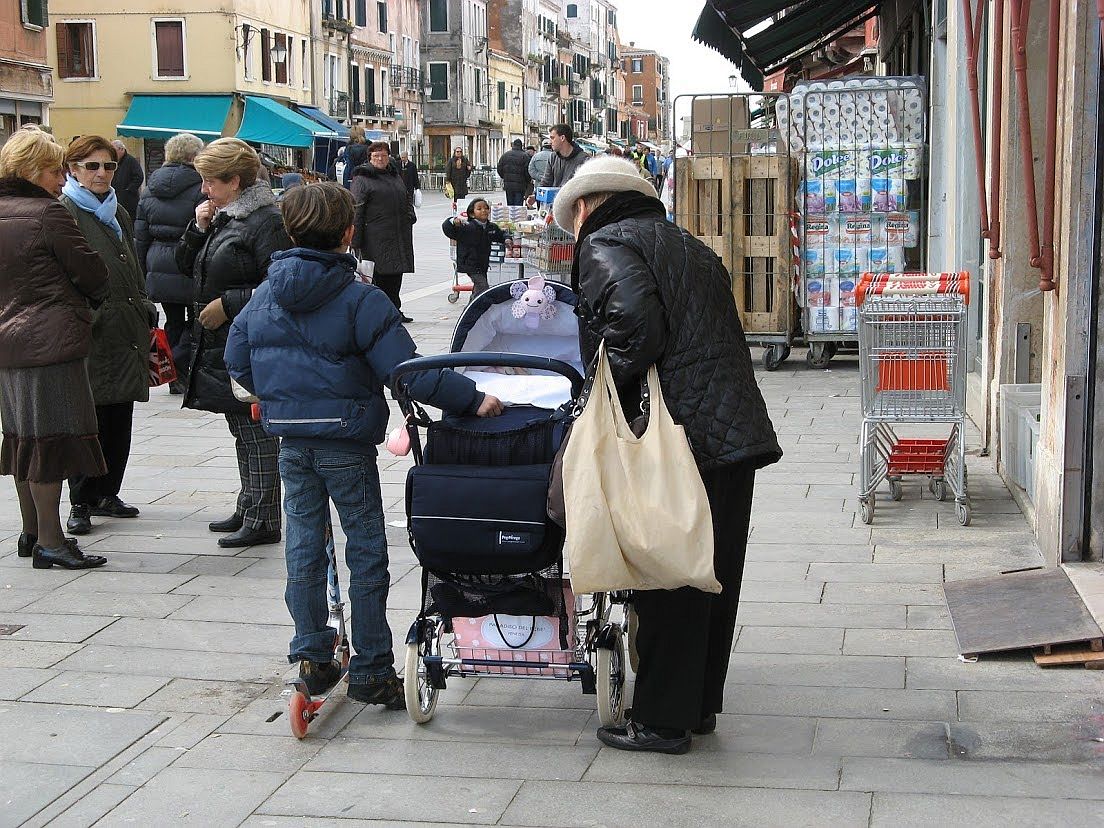
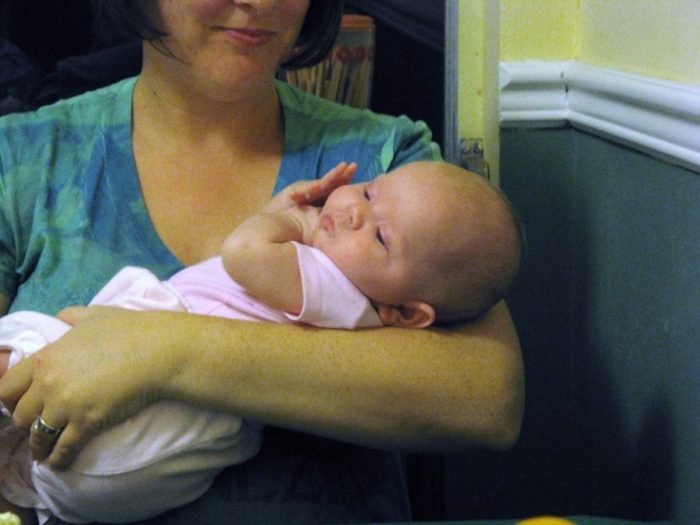
Threats:
Vardime co te parlo. “Look at me when I’m speaking to you!”
Col vien casa to pare ghelo digo. “I’m telling your father about this when he comes home.”
Come che te go fato, te desfo! “Just like I made you, I can unmake you.” (My favorite, a sort of global, all-encompassing threat coming from the elemental source. This was one of Lino’s mother’s major standbys.)
Verzo la scatola de le tangare. “I’m opening the box that’s full of smacks upside the head.” (A tangara is a smack. This is sometimes said as a very early warning using a delicately menacing tone. Sometimes it’s enough just to say “Verzo?”)
Dai, disi calcossa! Prova parlar se ti ga coragio!!! “Come on, say something! Try to speak if you’ve got the courage!”
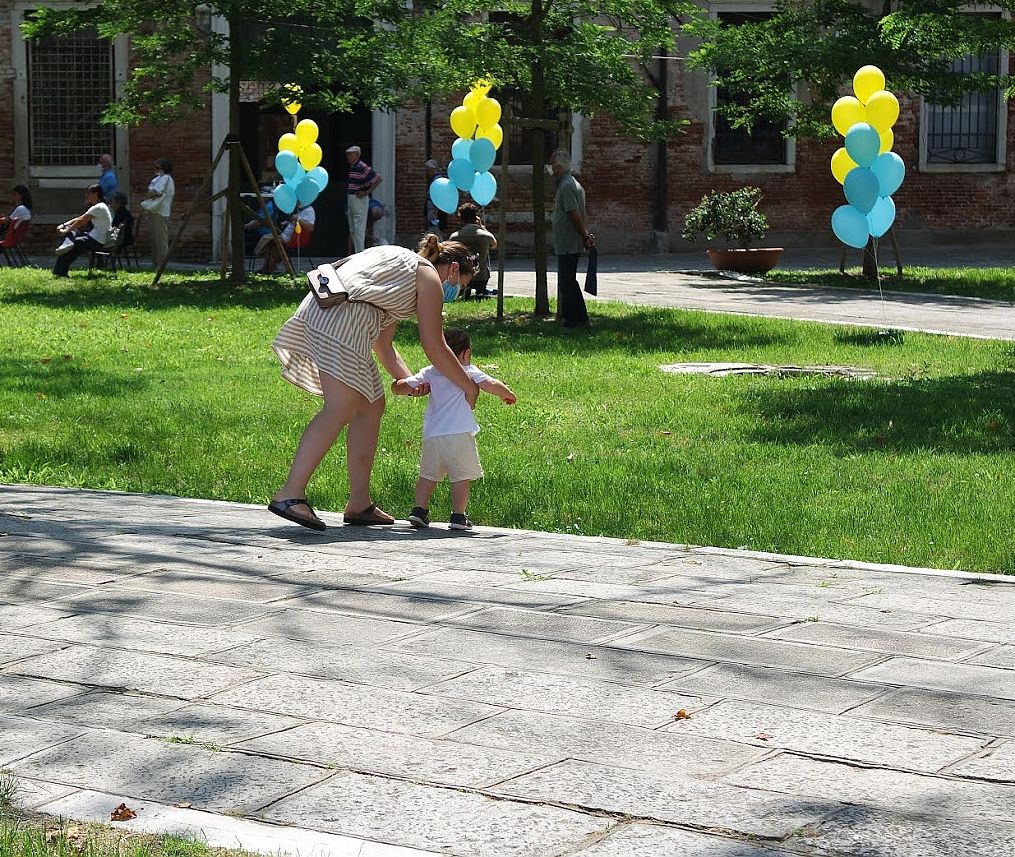
Ti pol pianzer in grego, tanto no te lo compro. “You can even cry in Greek, I’m still not buying it for you.”
Vara che te cambio i conotati! “Watch out, I’m going to change your face” (“conotati” are the features of your face, thus “beat you up”).

Vara che quela xè la porta. “Look, that over there is the door.” (Meaning you’re invited to depart by it.)
No sta far che vegna là to pare! “Don’t do it or your father will be coming over there.”
Vara che te meto in colegio! “Watch out, I’m going to put you in the reformatory.”
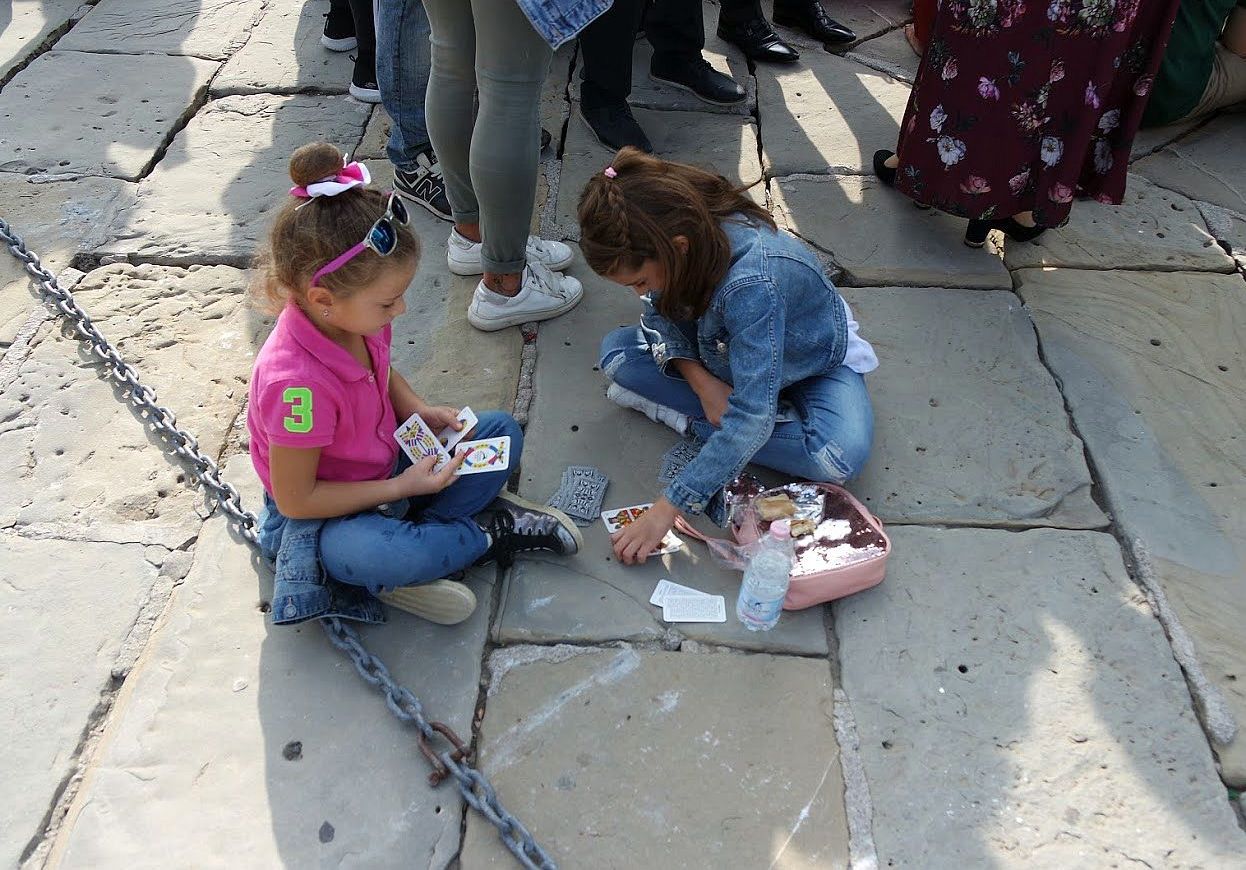
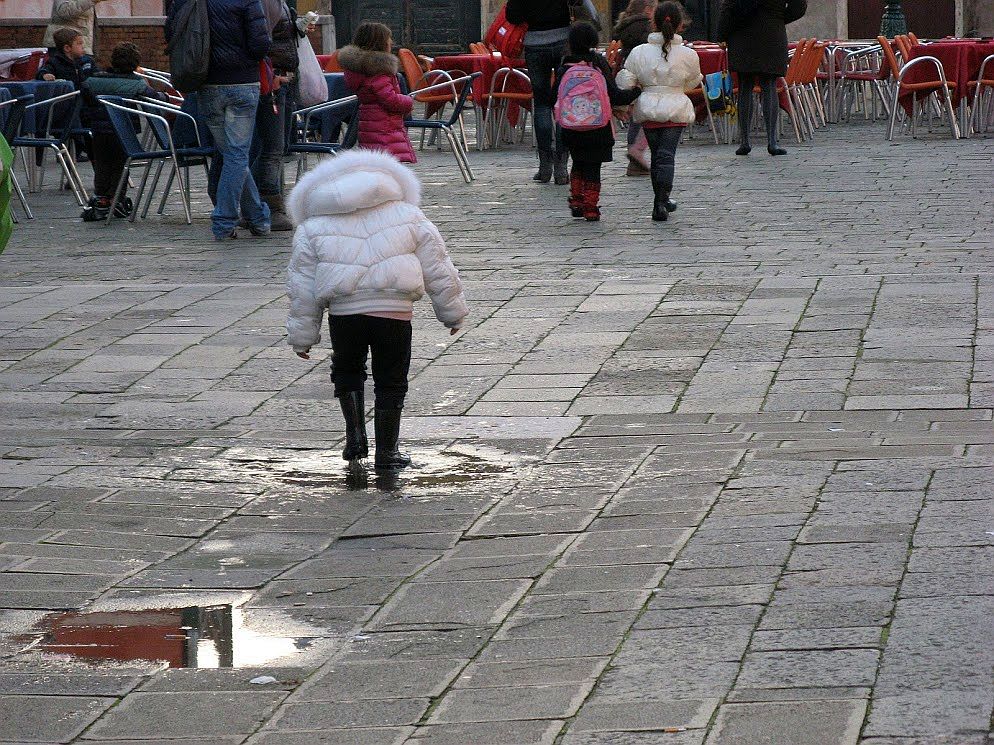
Domestic remarks:
I to amissi no ga minga na famega? “Your friends haven’t got families?”
Ti ga sentio quelo che te go dito! “Did you hear what I just said?”
Ma ti credi che mi fassa i schei de note? “You think I print money at night?”
Mi a la to età gero zà stufo de lavorar. “At your age I was already fed up with working.” (This sounds more like something a man would say to a slightly spoiled or slothful child, but I wouldn’t doubt that a mother might say the same thing.)
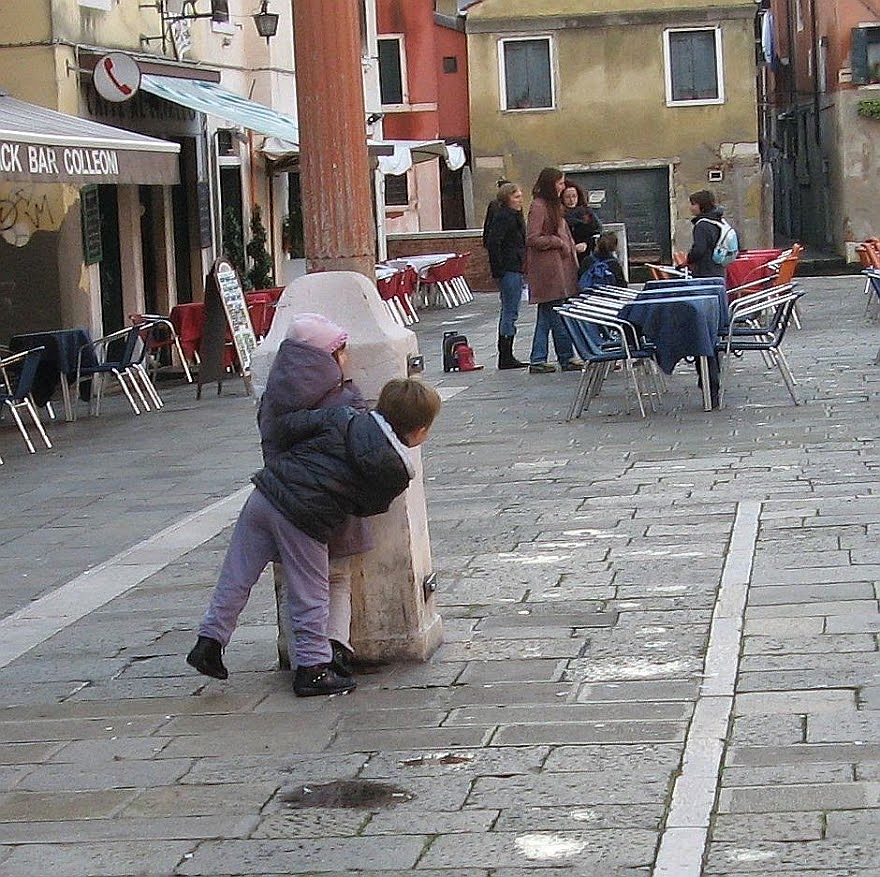
No sta strassinar i pìe. Also: No sta savatàr. “Don’t drag your feet.” “Savatar” is a verb created from zavata (ciabatta), or house slipper. Thus “Don’t scuff around as if you were wearing slippers.”
Te par che xe ora de rivar? “You think this is the right time to arrive?” (that is, come home). Said sarcastically when the obvious answer is “No, it’s screamingly late and I have no excuse.”
Ti vedara co no ghe sarà più la serva. “You’ll see (how things are) when you don’t have the servant (female gender) anymore.”
Cò moro mì ti mor da la fame. “When I die, you’ll die of hunger.”
Magna e tasi! “Eat and be quiet.”

Questa xè la casa de la lasagna…. Chi che no lavora no magna! “This is the house of lasagna — who doesn’t work doesn’t eat.” The point is the rhyme as much as the statement.
Ti ga proprio ciapa’ esempio dai piu’ sempi. “You’ve really taken the dumbest people as your example” (that is, of all the people you could have copied, you picked the dumbest ones).
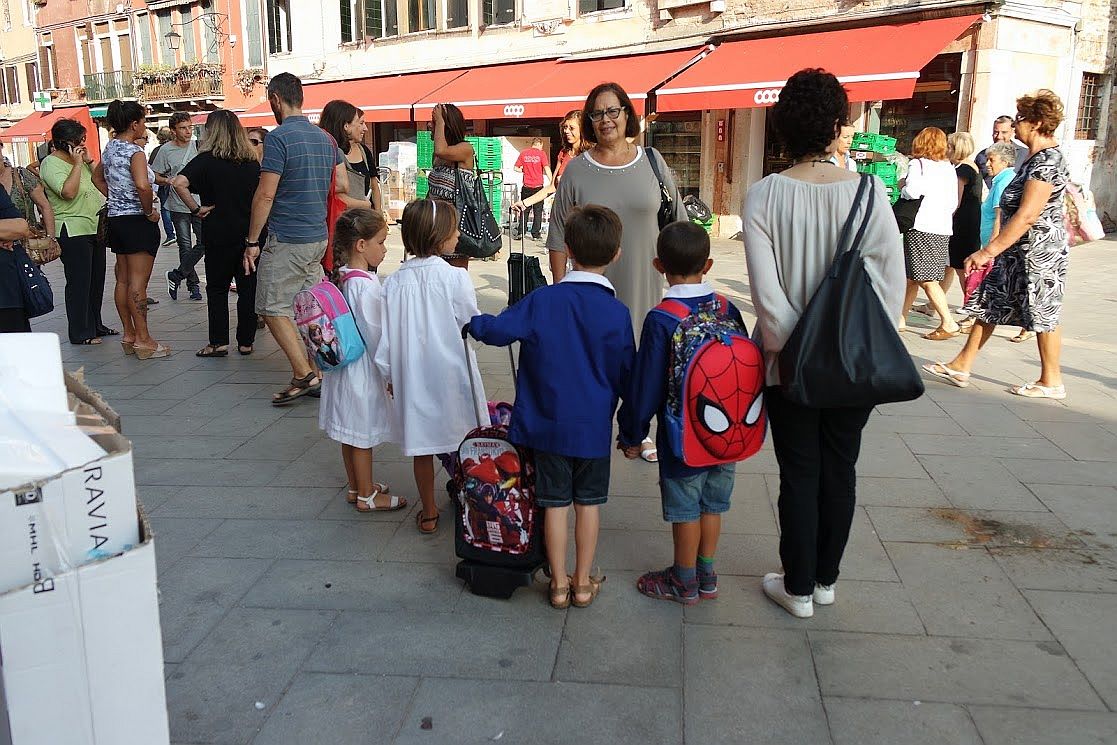
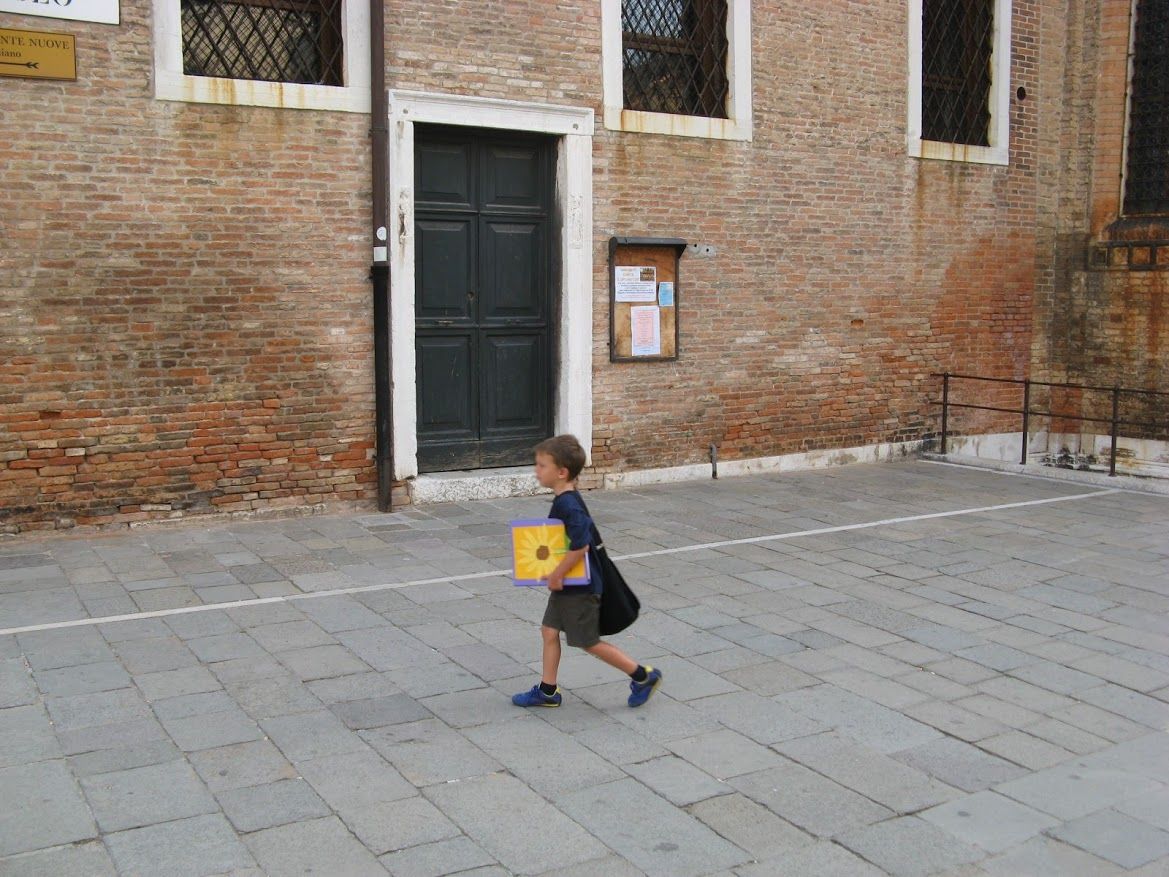
General insults:
Bon da gnente come el pantan! “Good for nothing, like mud.”
Varda el trio paloma: dò inseminii e uno in coma! “Look at the paloma trio: two idiots and one in coma.” The point is obviously the rhyme, but hitting three victims with one invective is motherly target practice at its best. “Inseminio” (in-sem-eh-NEE-oh) is a very common, usually friendly, insult. Nothing to do with insemination, it comes by way of scimunito, meaning fool. It’s a low-voltage jibe, which one source says is used “when a person near you does something irrational based on ignorance, little knowledge or inexperience.”
Te vorìa un poca de Russia a ti. “What you need is a little bit of Russia.” This is heavy artillery. The inference is from the Second World War, meaning that you need to be seriously squared away, perhaps by intense discipline, suffering, defeat — any aspect of the appalling experience the Italian Army suffered during Operation Barbarossa (the doomed German attempt to conquer the Soviet Union that ended hideously in the depths of winter, naturally). This expression may be losing some of its power by now, as the generations pass, though its significance is still clear enough. Father Gastone Barecchia, who was priest of the church of San Sebastiano and passed away in 2016 at the age of 102, served as military chaplain in Russia from July 1941 to March 1943.
Vergognite che xè ora e tempo! “It’s about time you were ashamed.”
No ti te vergogni minga! “You’re not the least bit embarrassed.”
Varda che te tendo. “Look out, I’m watching you.”
Gò un fio solo e anca ebete! “I’ve got just one son and he’s even dimwitted.” (Pronounced EH-beh-teh.) The implication is “Not only did I have only one child” (bad), “he had to be dimwitted too” (even worse). In other words, she’s saying she got screwed twice.


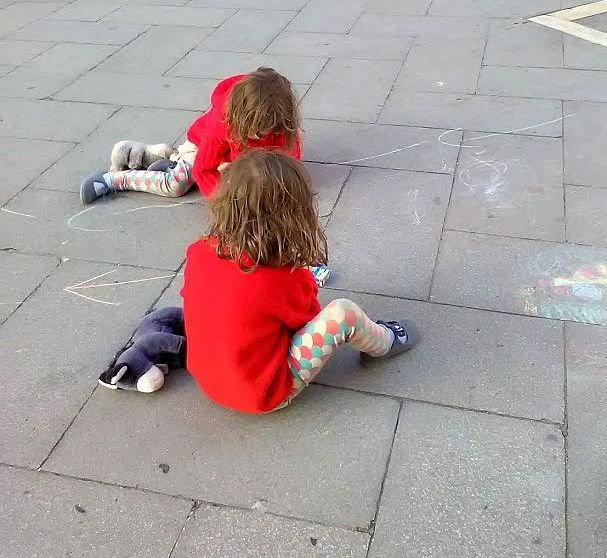
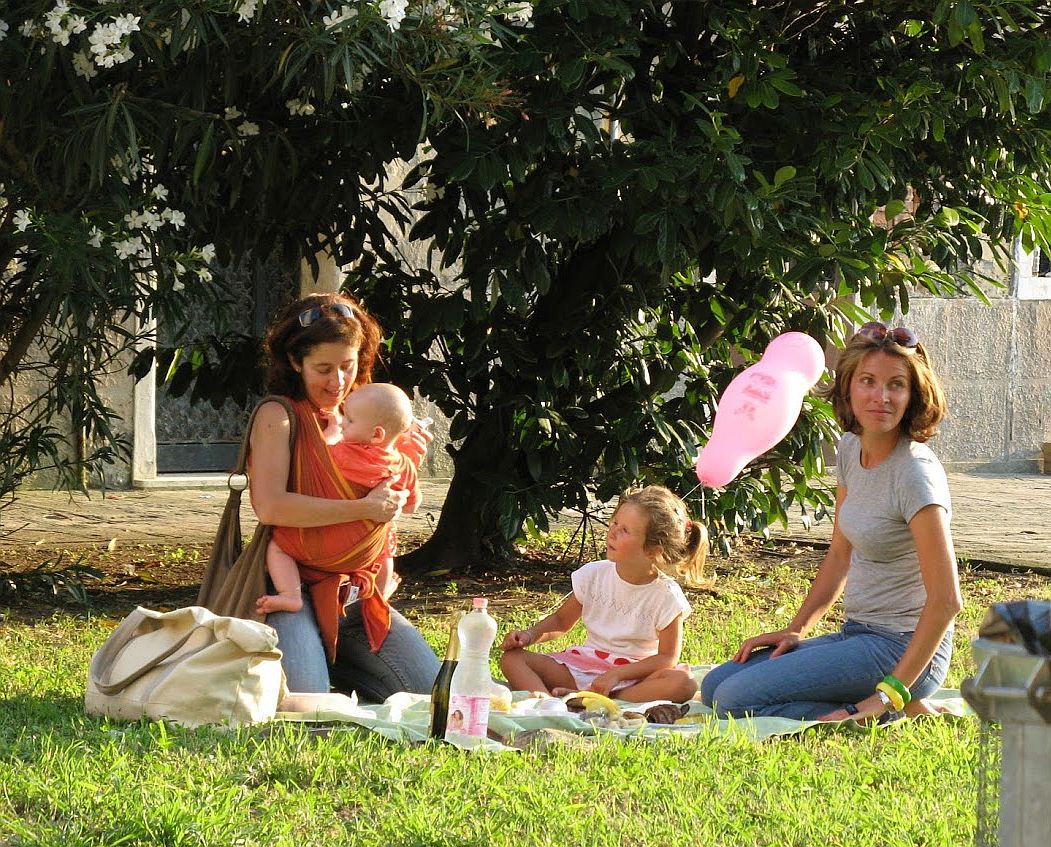
By the way, all this increased traffic will make it even more important to keep the aforementioned channel dredged. However, the deeper the channel, the faster the tide enters and exits, and already this action removes millions of cubic meters of sediment from the lagoon every year. Everyone knows that the Canale dei Petroli has thus caused incalculable damage to the lagoon and its extraordinary ecosystems. Ironic that UNESCO decided to designate part of the lagoon as a national monument with the notion of protecting it, but they seem not to have taken into account the effect so much extra traffic will have in a channel that essentially behaves as if it were a water vacuum sucking the soil from the lagoon.
FREE MARCO ZENNARO: